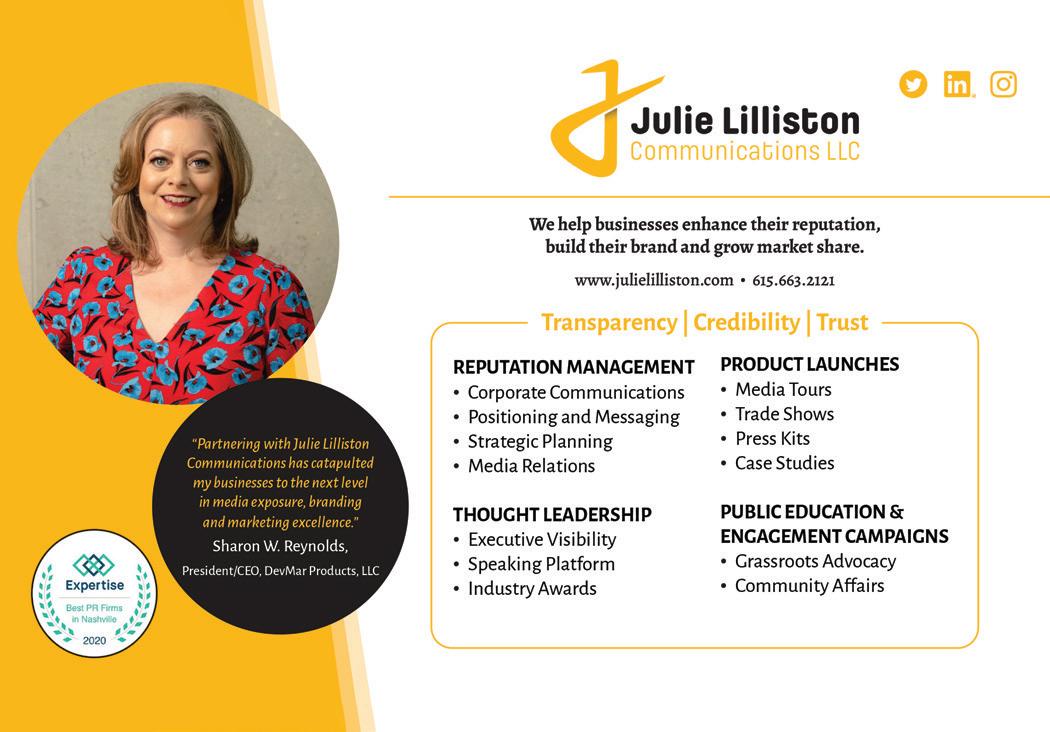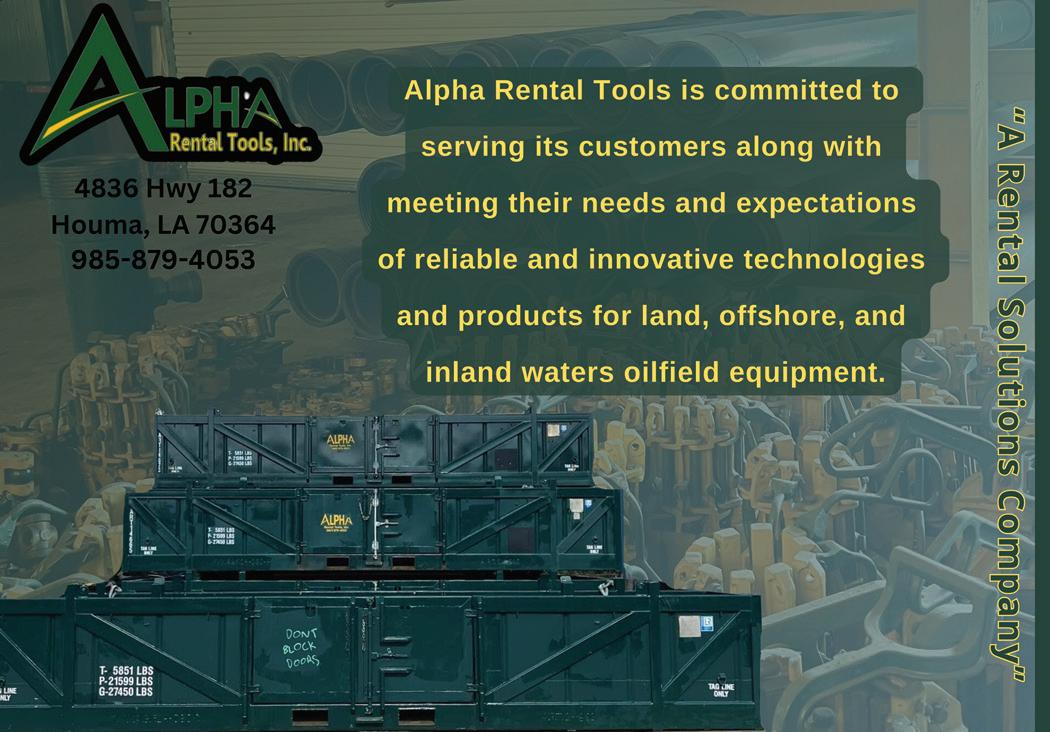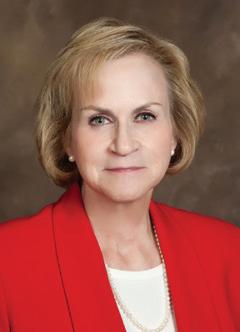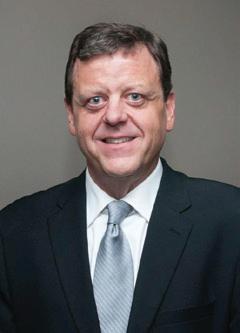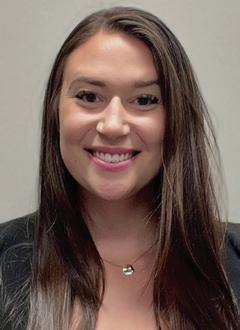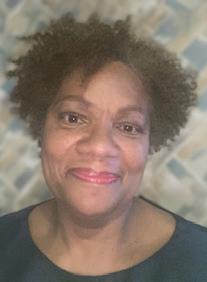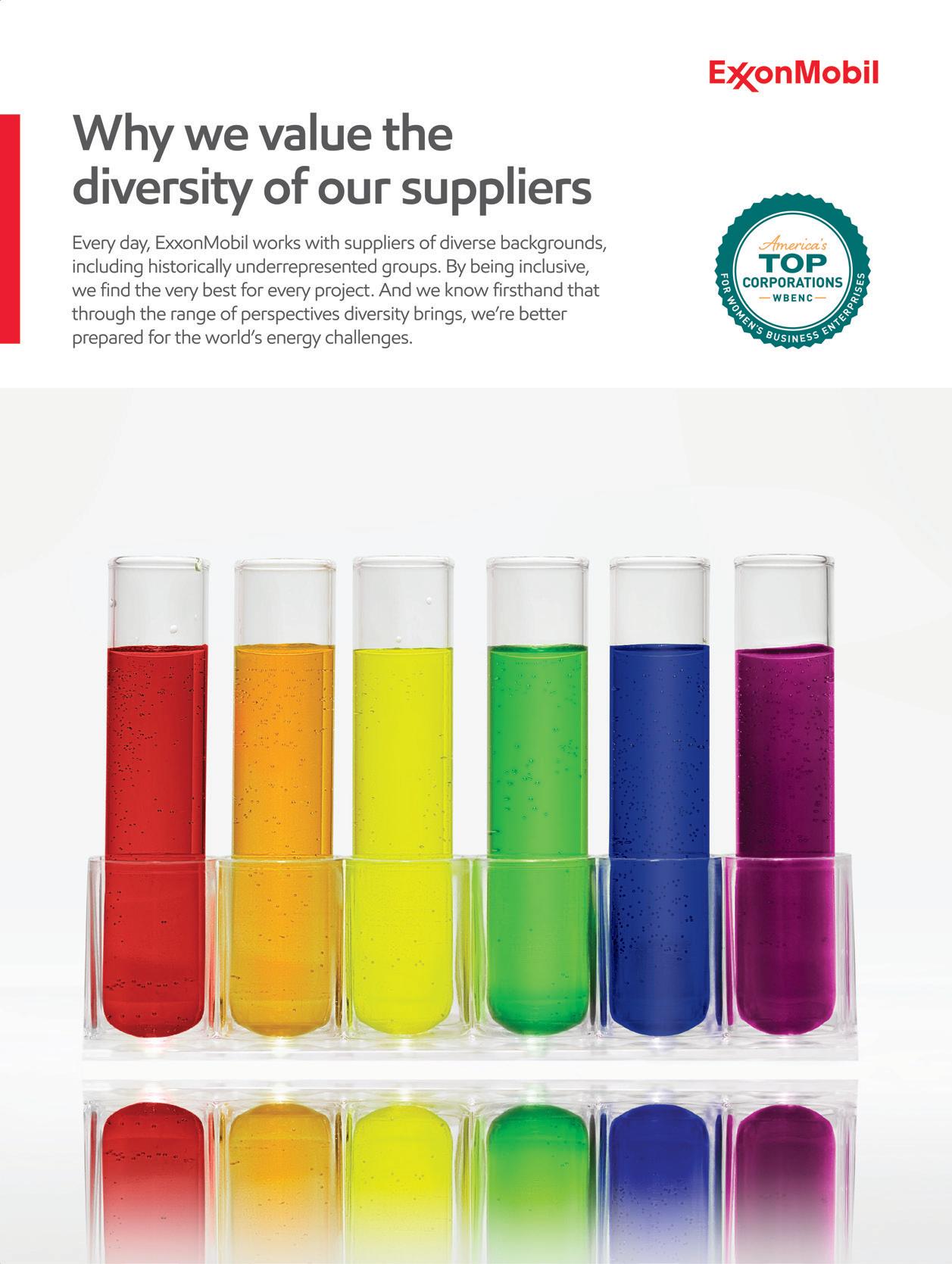
WBEC South Celebrates 30 Years of Success
Visionary Leader WBEC South's Phala K. Mire
Making Moves Synergy Design Group Acquires Imagen WBE Thriving Champions Circle Spotlight: Meet Power & Tel






WBEC South Celebrates 30 Years of Success
Visionary Leader WBEC South's Phala K. Mire
Making Moves Synergy Design Group Acquires Imagen WBE Thriving Champions Circle Spotlight: Meet Power & Tel





PUBLISHER
Phala K. Mire
EDITOR IN CHIEF
Julie Lilliston
ASSOCIATE EDITOR
Susan Stentz
ART DIRECTION
Rosa Balaguer Arostegui, Renaissance Publishing
CONTRIBUTORS
Alta Baker, Kelsey Cunningham, Marigny deMauriac, Theresa Jones, Judy Gatena Karpinski, Julie Lilliston, Amanda Merritt, Michele Miller, Phala K. Mire, Pamela PrinceEason, Blanca Robinson, Diana Sanchez-Vega, Susan Stentz, Domonique Townsend, Scott Vowels, Kate Weaver
PHOTOGRAPHERS
Kathy Anderson Photography Davillier Photography & Graphics

Copyright 2025 by WBEC South
All
POSTMASTER
Send
or
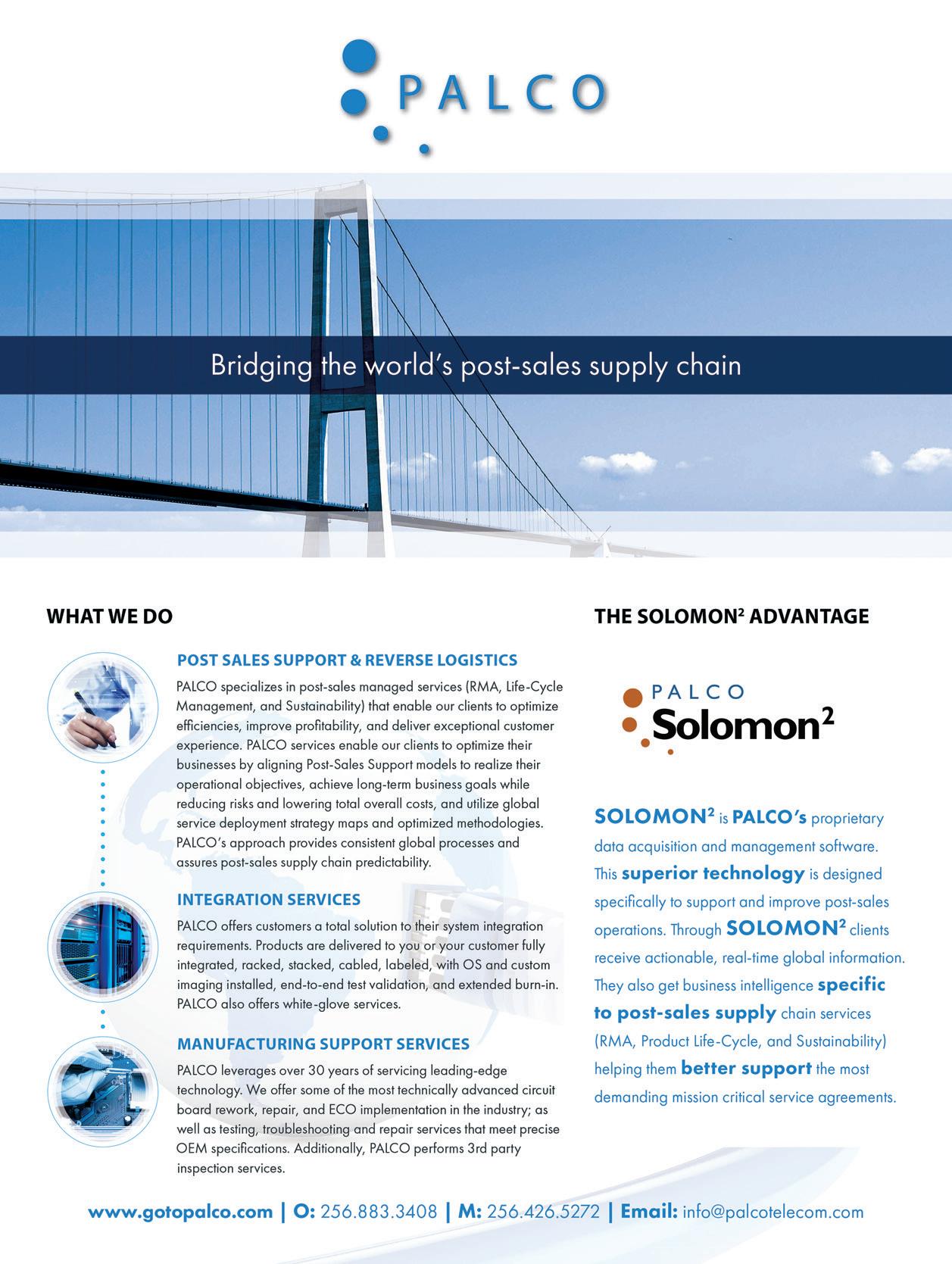
BY JULIE LILLISTON, WE SOUTH EDITOR IN CHIEF
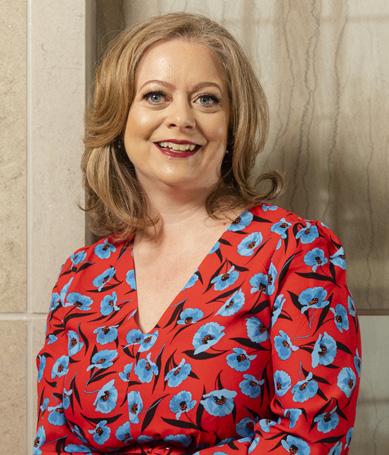
"The process to bring these stories to life in print and digital formats is a great collaboration with the WBEC South team, WBEs and corporate sponsors across the network."
Welcome to this 30th Anniversary special edition of WE South magazine! Congratulations to WBEC South for 30 years of supporting WBEs to help them grow their businesses. In this issue, read all about the organization’s history and defining moments with reflections by founding members and leadership. We also have a two-page feature on the 2024 WE Summit Awards & Scholarship Gala in New Orleans highlighting the conference, anniversary celebration and honoring award winners. We also celebrated the fifth anniversary of the WB Collective with a one-of-a-kind reception and women-owned marketplace.
Be sure to check out the cover story on the 2024 WBE Star, Pat Thomasson, CEO, Thomasson Company, who shares her entrepreneurial journey as a second generation business owner in Mississippi.
I’m honored to tell the story about the power of WBE to WBE connections featuring Luz Lobos, CEO, Synergy Design Group based in New Orleans, who purchased Nashville trade show company Imagen, founded by Joan LaGrasse. I hope this trend continues across the network.
This issue also includes contributed articles by WBE experts throughout the region on leveraging video in your business, cybersecurity trends you need to watch and how to plan a successful business exit among others.
The process to bring these stories to life in print and digital formats is a great collaboration with the WBEC South team, WBEs and corporate sponsors across the network. I would like to extend a special thank you to Phala K. Mire who served as President and CEO of WBEC South for nine years. Phala had the vision for this magazine and I’ve been honored to work alongside her to bring this publication to you for five issues. Phala, thank you for championing me and so many WBEs throughout the network with your creativity, innovation and leadership. Your contributions to the WBENC ecosystem will be felt for generations to come.
Thank you for reading WE South. It’s an honor to share these stories with you. I hope they inspire and motivate you to make bold moves in your business. WE


Anniversaries are often a time to reflect on significant milestones that have occurred since the last anniversary date. With this being WBEC South’s 30th anniversary, and coincidentally my final letter as Chairman of WBEC South, I think this is a perfect time to reflect on milestones we’ve achieved, but more importantly, in this letter, I will reflect on the top five leadership lessons I’ve learned that I hope will be of some use to you.
During my two years as Chair for WBEC South, we have had to make a lot of important decisions which will impact the future of the organization going forward. The Executive Committee has met on a weekly basis to make hard decisions as well as how to course correct some of the decisions that we made in the past. Once these choices were made, they were presented to the larger board for approval. For example, one of the most difficult decisions we had to make was to shut down the Nashville WB Collective. I believe the Nashville Collective was a great idea but the timing was just not right for WBEC South. As you can imagine, there was plenty of healthy debate on both sides of the aisle. However, I can say that a healthy, respectful debate amongst peers was essential for us to come to a decision that we all may not have agreed with, but in the end, we all agreed that we could support going forward.
This may seem like a no-brainer to both our WBE community and corporate professionals. The WBE community had to be flexible to survive the pandemic. As corporate professionals, often our companies may make decisions that are in the best interest of the company but may impact our supplier diversity efforts. In that case, we need to be flexible.
However, in the case of WBEC South, we had to make some programmatic decisions in the best interest of the organization, and the community the organization supports, that everyone may not have agreed with. For example, the Enterprising Women of Color program was a federal grant program from the Minority Business Development Agency. WBEC South in its history, had never had such a program. At the time of its implementation, it was a necessity, both financially and to truly engage portions of the WBEC South five state footprint that had previously been overlooked. Did everybody agree with the decision to pivot in this direction at the time decision was made? No. But after some healthy debate we all agreed that this was the decision that had to be made.
In times of uncertainty and difficulty, tough decisions must be made, it is uber important that you remember why you embarked on this endeavor in the first place. That is your North Star. I have been asked several times, with the attack on DEI combined with the incoming administration, ‘How should we move forward from a supplier diversity standpoint?’ My answer is, was, and will always be to remember why you got into this in the first place. If you’re a WBE, you were not worried about policies, legislation, public statements, or anything else. When you decided to start your business, there was a reason. Perhaps it was your passion for the business you own. Maybe it was because you’re a serial entrepreneur. It could be as simple as you just got tired of working for somebody else, or any other myriad reasons. If you are a supplier diversity professional, then you, like me, got in the space because of your passion for making sure that historically underrepresented communities had the opportunity to compete on a level playing field. And let’s be real, for some folks, this was just another steppingstone in climbing the corporate ladder. For those folks, I bear no ill will nor am I in any place to make a judgment. However, (I guess you can see a recurring theme here) in times of uncertainty, you must remember why you got into this in the first place. And if the reason you got into this in the first place, i.e., your North Star, does not hold up under the current realities, whatever they may be, there is no shame in adjusting, or even changing your North Star. Nevertheless, to succeed, you must have a North Star. If you’re a part of WBEC South and you've ever heard me speak then you have heard me say “Are we chasing the money or are we chasing the mission?” You must always be chasing the mission, and the money will come.
WBEC South’s 30th anniversary and my term ending as Chair are not the only significant happenings in WBEC South. Our President for the last 10 years, Phala Kimbrough Mire, has decided to move on. I don’t think it’s an understatement to say that I’m not sure we could have found a better person to lead WBEC South for these last 10 years, but especially the last three to four years. These were some very difficult times. However, Phala remained calm and cool throughout this whole process. She embraced and encouraged healthy debate. She was extremely flexible and willing to take risks, candidly, some of which paid off and some of which didn’t. Throughout it all, she never lost sight of the mission, her North Star. And if she wasn’t the charismatic leader worth following at the beginning of her stint as President, I promise you by the end, she was all that and more.
At first, lesson number five was going to be: always stay humble and never forget to say thank you. With an ego as big as mine, I think it would be hypocritical for me to say always stay humble. However, I would be remiss if I did not take the time out as my final act as Chair for WBEC South to say a heartfelt thank you to all of you who supported me as Chair. This was my first opportunity to serve as Chair of anything.
The Executive Committee and the Board of Directors put their trust in me to help lead this organization, As an African-American male living in California, helping lead an organization focused on women-owned businesses in the South, I struggled mightily with imposter syndrome, and was forced to come face-to-face with many of my own insecurities. WBEC South community, you will never know how much this meant to me, and I mean NEVER. I do not have the vocabulary to truly express what this opportunity meant to me. With that, my final words as Chair for WBEC South are simply…
THANK YOU

"Our mission to connect buyers and WBE suppliers is the north star that has guided our work every day"
BY PHALA K. MIRE, PRESIDENT & CEO, WOMEN'S BUSINESS ENTERPRISE COUNCIL SOUTH
Begin with the end in mind. That is generally my approach to anything I commit to doing, and it has certainly been my approach to everything I have done as President & CEO of WBEC South. When I accepted the position, I imagined a future where WBEC South had expanded its stakeholder base of corporations and certified WBEs exponentially and across the entire region. I envisioned new programs and partnerships that would lead to even more impact in each of our five states and a new level of stakeholder engagement that enhanced an already thriving organization. Looking back over my time here, I can honestly say that the end has far exceeded that vision.
Over the past nine years, I have worked alongside an incredibly dedicated team and a host of visionary board members. Together, we have strengthened our commitment to fostering the growth and success of women-owned businesses in new and innovative ways. Our work has resulted in an organizational transformation that will serve WBEC South for years to come. Not only has the organization exceeded 1,100 WBENC-certified WBEs, but we opened up the organization to a broader entrepreneurial community of women through the Women’s Business Collective (WB Collective), the Women’s Business Marketplace (WB Marketplace), and strong programs that grew our young entrepreneur and women of color communities.
We offered learning programs led by WBE experts, presented cutting-edge panels of thought leaders and influencers, and helped consumer-facing businesses grow their customer base through robust pop-up shops at every event. And, of course, we have developed an impressive array of matchmaking and sourcing opportunities that have resulted in countless ‘done deals.’ Our mission to connect buyers and WBE suppliers is the north star that has guided our work every day, and this very publication, WE South magazine, was crafted to tell our stories of success to a national audience.
I want to express my heartfelt thanks to each board member, past and present, for their unwavering support and guidance. Their insights and commitment have been invaluable to me in shaping the direction and impact of WBEC South. I am profoundly grateful to have worked with the most dedicated team of board members, executive officers, and staff. None of this would have happened without their dedication, collaboration, and support.
As I move on to my next chapter, I carry the invaluable experiences, lessons, and relationships cultivated during my time at WBEC South. I am confident that the organization will continue to thrive under the leadership of my friend and colleague, Lindsey All. Lindsey is going to bring fresh vision and leadership for the future of WBEC South. I can’t wait to see where she takes the organization, but what I know for sure is that, despite the challenges of the day, this organization will continue to be a refuge and a resource for women looking to build their businesses.
So, with that in mind, cheers to the next 30 years of WBEC South! WE

,1 0 0 0 t h W B ,E a t e s t a m e n t t o t h e
b o t h M e m p h i s a n d N a s h v i l l,e a l l o w i n g t h e o r g a n i z a t i o n t o e x p a n d
W o m e n' s
i t s s u p p o r t f o r w o m e n e n t r e p r e n e u r s i n t h e r e gi o n 2 0 2 0
B u s i n e s s C e n t e r g r a n t s f o r
2 0 2 3 O u r H i s t o r y
W o m e n o f C o l o r g r a n t a n d t h e S B A
E n t e r p r i s i n g
M i s s i s s pi pi , A l a b a m ,a a n d t h e F l
W B E C S o u t h r e c e i v e d t h e p r e s t gi i o u s M B D A
C o a s t ( W B C G C ) a f t e r a d d i n g
b i l l i o n
s i n e s s C o u n c i l G u l f
m a k i n g a n e c o n o m i c i m p a c t o f $ 1 7
a n d b a r r i e rb r e a k i n g p r o g r a m m i n g , s u p p o r t i n g W B E s a c r o s s 5 s t a t e ,s
o p p
o r t u n i t i e s a n d e n g a g e m e n t 2 0 1 4
C e l e b r a t i n g 3 0 y e a r s o f i n n o v a t i v e
o n ,s u s h e r i n g i n a n e w e r a o f
The Women's Business Council is one of the four founding Regional Partner Organizations (RPOs) of the Women's Business Enterprise National Council
W B E C
a l l o w i n g t h e o r g a n i z a t i o n t o e x p a n d
a n d b a r r i e rb r e a k i n g p r o g r a m m i n g , s u p p o r t i n g W B E s a c r o s s 5 s t a t e ,s m a k i n g a n e c o n o m i c i m p a c t o f $ 1 7
i t s s u p p o r t f o r w o m e n e n t r e p r e n e u r s i n t h e r e gi o n 2 0 2 0 2 0 2 4
C e l e
B E C S o u t h r e c e i v e d t h e p r e s t gi i o u s M B D A E n t e r p r i s i n g W o m e n o f C o l o r g r a n t a n d t h e S B A W o m e n' s B u s i n e s s C e n t e r g r a n t s f o r b o t h M e m p h i s a n d N a s h v i l l,e
i s t o r y
b r a t i n g 3 0 y e a r s o f i n n o v a t i v e
a l l o w i n g t h e o r g a n i z a t i o n t o e x p a n d i t s s u p p o r t f o r w o m e n e n t r e p r e n e u r s i n t h e r e gi o n 2 0 2 0 2 0 2 4
2008
c e r t i f i e d i t s ,1 0 0 0 t h W B ,E a t e s t a m e n t t o t h e o r g a n i z a t i o n' s c o m m i t m e n t t o e m p o w e r i n g w o m e no w n e d b u s i n e s s e s a n d p r o m o t i n g e c o n o g r o w t h i n t h e S o u t h 2 0 2 3

T e n n e s s e e a n d t h e W o m e n’ s B u s i n e s s E n t e r p r i s e C o u n c i l S o u t h ( W B E C S o u t h ) i s c r e a t e d 2 0 0 8
2003 Women's Business Council became Women's Business Council Gulf Coast (WBCGC) after adding Mississippi, Alabama, and the Florida Panhandle to its territory
P a r t n e r O r g a n i z a t i o n s ( R P O s ) o f t h e
d b u s i n e s s e s w i t h c o r p o r a t i o n ,s u s h e r i n g i n a n e w e r a o f o p p o r t u n i t i e s a n d e n g a g e m e n t 2 0 1 4
o m e n o f C o l o r g r
l l,e
B E C S o u t h r e c e i v e d t h e p r e s t gi i o u s M B D A E n t e r p r i s i n g
c o n n e c t i n g w o m e no w n e d b u s i n e s s e s w i t h c o r p o r a t i o n ,s u s h e r i n g i n a n e w e r a o f o p p o r t u n i t i e s a n d e n g a g e m e n t 2 0 1 4
WBENC awards WBCGC the state of Tennessee and the Women's Business Enterprise Council South (WBEC South) is created P
T h e W o m e n’ s B u s i n e s s C o u n c i l i s o n e o f t h e f o u r f o u n d i n g R e gi o n a l
W o m e n’ s B u s i n e s s E n t e r p r i s e N a t i o n a l C o u n c i l 1 9 9 7 W B E N C a w a r d s W B C G C t h e s t a t e o f
2 0 2 3
2014 Celebrated 20 years of successfully connecting women-owned businesses with corporations, ushering in a new era of opportunities and engagement
2 0 1 9
P a r t n e r O r g a n i z a t i o n s ( R P O s ) o f t h W o m e n’ s B u s i n e s s E n t e r p r i s e N a t i o n a l C o u n c i l 1 9 9 7 W B E N C a w a r d s W B C G C t h e s t a T e n n e s s e e a n d t h e W o m e n’ s B u s i n e s s E n t e r p r i s e C o u n c i l S o u t ( W B E C S o u t h ) i s c r e a t e d 2 0 0 8 W B E C S o u t h o p e n e d t h e W B C o l l e c t i v e i n N O L ,A p r o v i d i n g s p a c e f o r w o m e no w n e d b u s i n e t o c o l l a b o r a t e a n d g r o w . A d d i t i o n W B M a r k e pt l a c e w a s f o u n d e d t o c o n n e c t b u y e r s w i t h c e r t i f i e d W B 2 0 1 9 W B E C S o u t h p r o u d yl
b i l l i o n W B E N C a w a r d s W B C G C t h e s t a t e o f
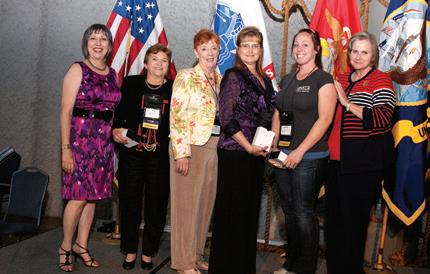

T h e W o m e n’ s B u s i n e s s C o u n c i l i o n e o f t h e f o u r f o u n d i n g R e gi o n a l
T e n n e s s e e a n d t h e W o m e n’ s B u s i n e s s E n t e r p r i s e C o u n c i l S o u t h ( W B E C S o u t h ) i s c r e a t e d
2 0 0 8 W B E C S o u t h o p e n e d t h e W B C o l l e c t i v e i n N O L ,A p r o v i d i n g a s p a c e f o r w o m e n -
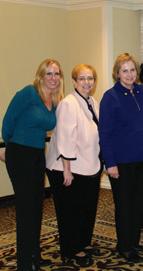
n'
c
m m i t m
t
W o m e n o f C o l o r g r a n t a n d t h e S B A
p r e s t gi i o u s M B D A
b i l l i o n
m a k i n g a n e c o n o m i c i m p a c t o f $ 1 7
o r t i n g
W o m e n' s B u s i n e s s C e n t e r g r a n t s f o r b o t h M e m p h i s a n d N a s h v i l l,e 2 0 2 0
E n t e r p r i s i n g
W B E C
W
2019
S o u t h r e c e i v e d t h e
B E s a c r o s s
a n d b a r r i e rb r e a k i n g p r o g r a m m i n g , s u p p
a l l o w i n g t h e o r g a n i z a t i o t o e x p a n d
5 s t a t e ,s
b o t h M e m p h i s a n d N a s h v i l l,e
W o m e n' s B u s i n e s s C e n t e r g r a n t s f o r
C e l e b r a t i n g 3 0 y e a r s o f i n n o v a t i v e
i t s s u p p o r t f o r w o m e n e n t r e p r e n e u r s i n t h e r e gi o n 2 0 2 0
W o m e n o f C o l o r g r a n t a n d t h e S B A
i t s s u p p
S o u t h r e c e i v e d t h e p r e s t gi i o u s M B D A
E n t e r p r i s i n g
S o u t h p r o u d yl
c e r t i f i e d i t s ,1 0 0 0 t h W B ,E a t e s t a m e n t
C
b u s i n e s s e s w i t h c o r p o r a t i o n ,s u s h e r i n g i n a n e w e r a o f o p p o r t u n i t i e s a n d e n g a g e m e n t 2 0 1 4
c o n n e c t i n g w o m e no w n e d
C e l e b r a t e d 2 0 y e a r s o f s u c c e s s f u l yl
a l l o w i n g t h e o r g a n i z a t i o n t o e x p a n d
b o t h M e m p h i s a n d N a s h v i l l,e
W o m e n' s B u s i n e s s C e n t e r g r a n t s f o r
W o m e n o f C o l o r g r a n t a n d t h e S B A
h e r i n g i n a n e w e r a o f o p p o r t u n i t i e s a n d e n g a g e m e n t 2 0 1 4 W B E C
o r t f o r w o m e n e n t r e p r e n e u r s i n t h e r e gi o n 2 0 2 0 2 0 2 4
W o m e n’ s B u s i n e s s C o u n c i l b e c a m e W o m e n’ s B u s i n e s s C o u n c i l G u l f C o a s t ( W B C G C ) a f t e r a d d i n g M i s s i s s pi pi , A l a b a m ,a a n d t h e F l o r i d a P a n h a n d l e t o i t s t e r r i t o r y 2 0 0 3
e m p o w e r i n g w o m e no w n e d 2 0 2 3 O u r H i s t o r y
WBEC South opened the WB Collective in NOLA, providing a space for womenowned businesses to collaborate and grow. Additionally, WB Marketplace was founded to connect buyers with certified WBEs T h e W o m e n’ s B u s i n e s s C o u n
2020
a n e w e r a o f o p p o r t u n i t i e s a n d e n g a g e m e n t 2 0 1 4 W B E C S o u t h r e c e i v e d t h e p r e s t gi i o u s M B D A E n t e r p r i s i n g
T h e W o m e n’ s B u s i n e s s C o u n c i l w a s i n c o r p o r a t e d 1 9 9 4
O u r H i s t o r y
1 9 9 4 W o m e n’ s B u s i n e s s C o u n c i l b e c a m e W o m e n’ s B u s
WBEC South proudly certified its 1,000th WBE, a testament to the organization's commitment to empowering women-owned businesses and promotiong economic growth in the South
g r o w t h i n t h e S o u t h 2 0 2 3
n e d t h e
n e d
l e c t i v e i n N O L ,A p r o v i d i n g s p a c e f o r w o m e no w n e d b u s i n e s t o c o l l a b o r a t e a n d g r o w . A d d i t i o n W B M a r k e pt l a c e w a s f o u n d e d t o c o n n e c t b u y e r s w i t h c e r t i f i e d W B 2 0 1 9
0 0 0 t h W
WBEC South received the prestigious MBDA Enterprising Women of Color grant and the SBA Women's Business Center grants for both Memphis and Nashville, allowing the organization to expand its support for women enterpreneurs in the region
b u s i n e s s e s a n d p r o m o t i n g e c o n o m i c

T e n n e s s e e a n d t h e W o m e n’ s B u s i n e s s E n t e r p r i s e C o u n c i l S o u t ( W B E C S o u t h ) i s c r e a t e d 2 0 0 8 W B E C S o u t h o p e n e d t h e W B C o l l e c t i v e i n N O L ,A p r o v i d i n g s p a c e f o r w o m e no w n e d b u s i n e s t o c o l l a b o r a t e a n d g r o w A d d i t i o n W B M a r k e pt l a c e w a s f o u n d e d t o c o n n e c t b u y e r s w i t h c e r t i f i e d W B 2 0 1 9 W B E C
T h e W o m e n’ s B u s i n e s s C o u n c i l i o n e o f t h e f o u r f o u n d i n g R e gi o n a P a r t n e r O r g a n i z a t i o n s ( R P O s ) o f t h W o m e n’ s B u s i n e s s E n t e r p r i s e N a t i o n a l C o u n c i l 1 9 9 7 W B E N C a w a r d s W B C G C t h
W B E C S o u t h o p e n e d t h e W B C o l l e c t i v e i n N O L ,A p r o v i d i n g a s p a c e f o r w o m e no w n e d b u s i n e s s e t o c
P a r t n e r O r g a n i z a t i o n s ( R P O s ) o f t h W o m e n’ s B u s i n e s s E n t e r p r i s e N a t i o n a l C o u n c i l 1 9 9 7 W B E N C a w a r d s W B C G C t h e s t a
T h e W o m e n’ s B u s i n e s s C o u n c i l i s o n e o f t h e f o u r f o u n d i n g R e gi o n a l P a r t n e r O r g a n i z a t i o n s ( R P O s ) o f t h e W o m e n’ s B u s i n e s s E n t e r p r i s e N a t i o n a l C o u n c i l 1 9 9 7 W B E N C a w a r d s W B C G C t h e s t a t e o T e n n e s s e e a n d t h e W o m e n’ s B u s i n e s s E n t e r p r i s e C o u n c i l S o u t h ( W B E C S o u t h ) i s c r e a t e d 2 0 0 8
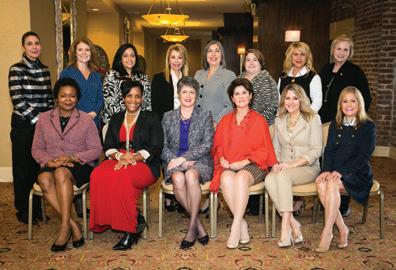
T h e W o m e n’ s B u s i n e s s C o u n c i l i o n e o f t h e f o u r f o u n d i n g R e gi o n a
2024 Celebrating 30 years of innovative and barrier-breaking programming, supporting WBEs across 5 states, making an economic impact of $17 billion
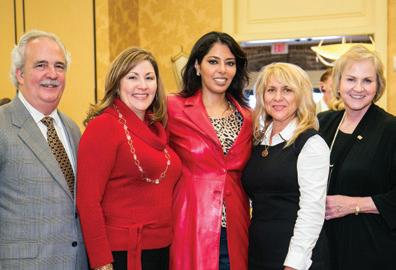


BY ALTA BAKER, BLANCA ROBINSON, SUSAN STENTZ AND KATE WEAVER
We reached out to influential WBEC South leaders, Founding Member Alta Baker, Past Presidents Blanca Robinson and Kate Weaver, and Board of Directors Chair Emeritus, Susan Stentz, for their perspectives on the organization’s beginning and 30 year history.
When did you get involved with WBEC South? Why did you get involved? What leadership roles have you held? I am a founding member of WBEC South. We saw a critical need for representation and networking opportunities for women business owners, so we came together to create that space.
Over the years, I have served in multiple leadership roles, including: Founding Member, Member of the Board of Directors (multiple terms), Member of the WBENC National Forum, Chair of the WBENC National Forum, Member of the WBENC Board of Directors (multiple terms).
What were the biggest hurdles facing the organization at the time? How did you navigate them? When WBEC South was founded, we didn’t even have an office—just a small but passionate group of women business owners determined to advocate for fair representation. We faced significant challenges, but with perseverance and the support of corporate sponsors—both men and women—who believed in our mission, we were able to build a strong foundation for the organization.
What’s your favorite memory of WBEC South?
Over the last 30 years, I’ve had countless incredible experiences—both rewarding and challenging. It’s impossible to pick just one, but two moments stand out: Moving into our first office—a milestone that symbolized how far we had come. Hosting our first networking session, which set the stage for the many opportunities WBEC South would provide for women business owners.
In today’s business climate, what are the greatest challenges for WBEs? One of the biggest challenges is gaining direct access to decision-makers—whether it’s corporate supplier leaders or executives who can champion WBEs within their organizations.
Additionally, access to capital remains a significant barrier for women business owners looking to grow and scale their businesses.
What is your hope for WBEC South in the next five years? I hope WBEC South continues to grow, expanding its networking and contract opportunities for all women business owners. My vision is for even more WBEs to have the resources, support, and connections needed to thrive in today’s business landscape.


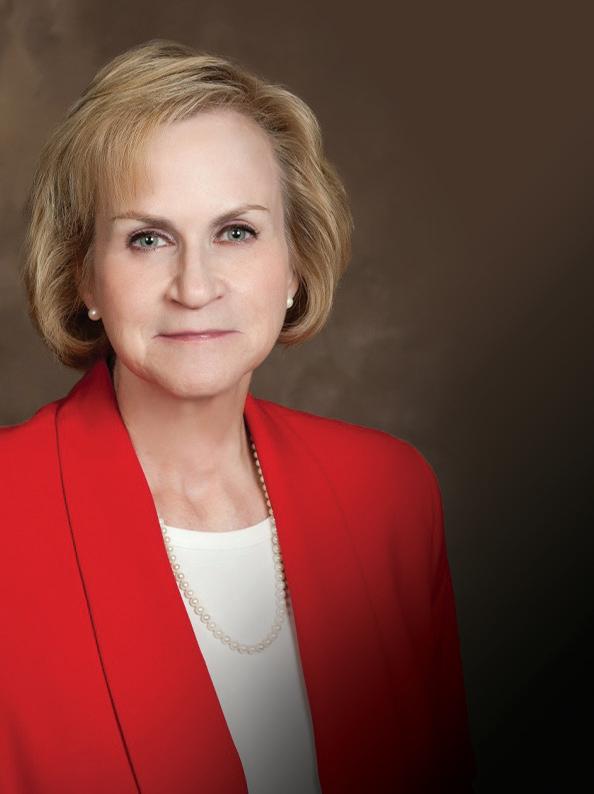
When did you get involved with WBEC South? Why did you get involved? In what leadership roles did you serve? My journey to WBEC South started before the organization’s existence. I represented Mobil Oil in their Supplier Diversity efforts and actively participated in the Gulf South Minority Procurement Council. I was invited to participate in the formation discussions of what would become WBC Gulf Coast, one of the four RPOs predating the national WBENC organization. More than 30 years later, I’m still here. There isn’t a role I haven’t taken on—except as a certified WBE. From the early days of safeguarding the organization’s critical documents and financials in the trunk of my car before we even had an office, to serving on the National Certification Committee with the legendary Candace Waterman, to restocking the WB Collective coffee bar and taking out the trash, to Chair Emeritus—I’ve done whatever it takes. I am, and always will be a proud guardian, advocate, cheerleader, and the organization’s #1 volunteer.
What were the biggest hurdles facing the organization at the time? How did you navigate them? In my opinion, the biggest challenges then—and now—are access to opportunities and capital, as well as overcoming misconceptions about the scale and capabilities of WBEs. One of the narratives I strongly oppose is the idea that WBEs are simply “small and agile.” WBEs come in every size, across nearly every industry, bringing immense value, expertise, and innovation.
What’s your favorite memory of WBEC South? I have so many, but my all-time favorite moment was when we finally secured an official office with a permanent address— thanks to Texaco (now Chevron). For a significant time we operated like nomads. Through the generosity of Julie Rodriguez, a successful WBE and former owner of EPIC Divers, we were able to use office space in her building on the West Bank of New Orleans. However, to truly grow and establish our reputation, we needed a visible presence in downtown New Orleans’ Central Business District. Texaco made that possible. A close second would be five years ago when we opened the WB Collective in New Orleans. That endeavor required a bold leap of faith, unwavering courage, and the full support and strategic vision of our board and leadership.
In today’s business climate, what are the greatest challenges for WBEs? Access—both to opportunities and to capital—remains a primary challenge. Additionally, the evolving nature of business means that we must continuously adapt our platform to meet emerging needs. Despite these challenges, I firmly believe in our mission and that our corporate members and stakeholders recognize the value that WBEC South brings to building a strong, innovative, and inclusive supply chain.
What is your hope for WBEC South in the next five years? I hope that the hurdles of today become distant memories. My vision is for WBEC South to continue to be flexible, thriving as a strategic, inclusive, and forwardthinking organization that delivers exceptional value to its stakeholders.
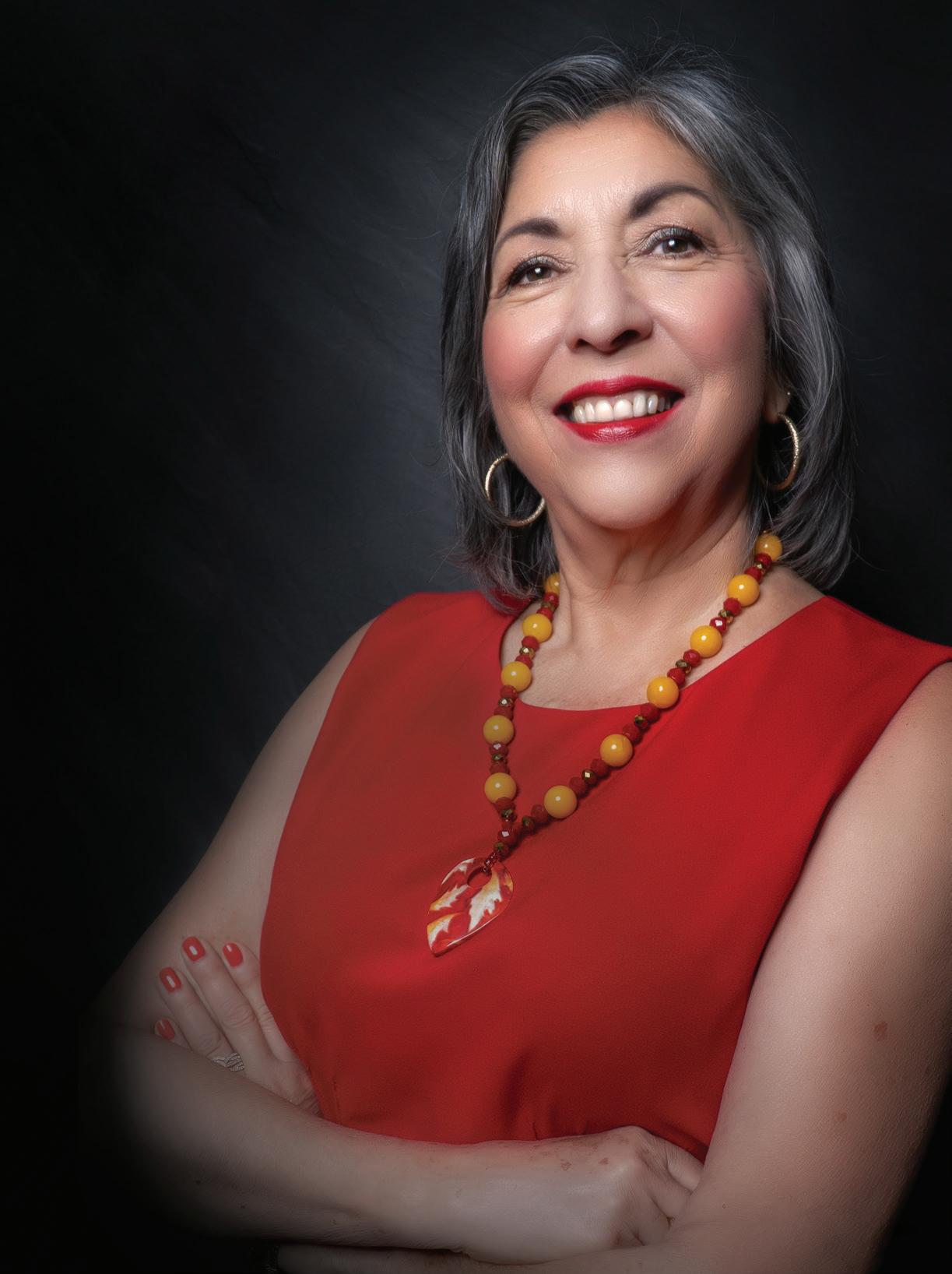
When did you serve as CEO of WBEC South? What brought you to the organization? I moved to Houma, Louisiana from Corpus Christi, Texas when I married my husband Jackie in July 1998. Through a former colleague living in Louisiana, I learned that a young fledgling organization named the Women’s Business Council was looking for an Executive Director. I had no knowledge of non-profits, as my background encompassed 22 years in the oil and gas industry. I had been involved with a few women’s groups in Corpus Christi so I figured I would give it a shot. I contacted Julie Rodriguez, the woman who was heading the search, met with her within a few days, and then met with some of the board members. I was hired and began my new journey in October 1998.
What were the biggest hurdles facing the organization at the time? How did you navigate them? The organization was very young at that time—we had about 70 WBEs (Women’s Business Enterprises) and less than 10 corporate members. I was the only employee. We had no official office, no computer equipment, no dedicated phone line, no database, and about $5,000 in the bank to pay for operations and my salary. People have heard us joke about “me and the boxes.” It’s a true story. My first day on the job, I walked into a temporary office with five large cardboard boxes full of papers—that was the Women’s Business Council. We had no place to go but UP! What we lacked in physical and financial resources, we more than made up for in determination and staunch support from the women business owners and board members who were committed to helping me grow the organization. We held our first trade show within a year and gradually began to attend functions where we could promote the organization and the benefits of certification, which was something relatively new for most women-owned businesses. To give you another frame of reference, the Women’s Business Enterprise National Council (WBENC) was one year old in 1998 and beginning its own growth and expansion across the country.
What’s your favorite memory of WBEC South? There are so many fond memories, some small, others large, but all significant. Some of these include having enough work (and money!) to be able to hire staff; expanding our territory, first to Mississippi and Alabama, then to Tennessee; being a host council to WBENC national conferences; reaching the 500 certified WBEs milestone; moving into a beautiful new office in Metairie; delivering successful events and receptions throughout our territory; celebrating our 20th anniversary with a great event in each of our states; and handing over a well-oiled and financially solvent organization to my successor, Phala Mire.
In today's business climate what are the greatest challenges for WBEs? Today’s business climate poses distinct challenges to WBEs due to economic as well as political concerns. It is even more imperative to remain competitive, to develop and serve a niche market, to offer innovative solutions, and to deliver products and/or services that address the specific concerns of their target market, whether it is a major corporation, a small business, or the end consumer.
What is your hope for WBEC South in the next five years?
WBEC South has been able to pivot numerous times over the past 30 years, whether it was due to Mother Nature’s wrath, a pandemic, an economic slump, or some other catastrophe. It has proven itself as a resilient organization from the beginning due to great leadership, a committed staff, enthusiastic members, and a dedicated board. All of these have combined to help propel the organization forward so that it reached its goals and initiatives. I have no doubt that with the new incoming leadership, the organization will continue to prosper, reach new milestones, achieve unparalleled growth, and continue to be a respected firstclass organization. Onward to the future!
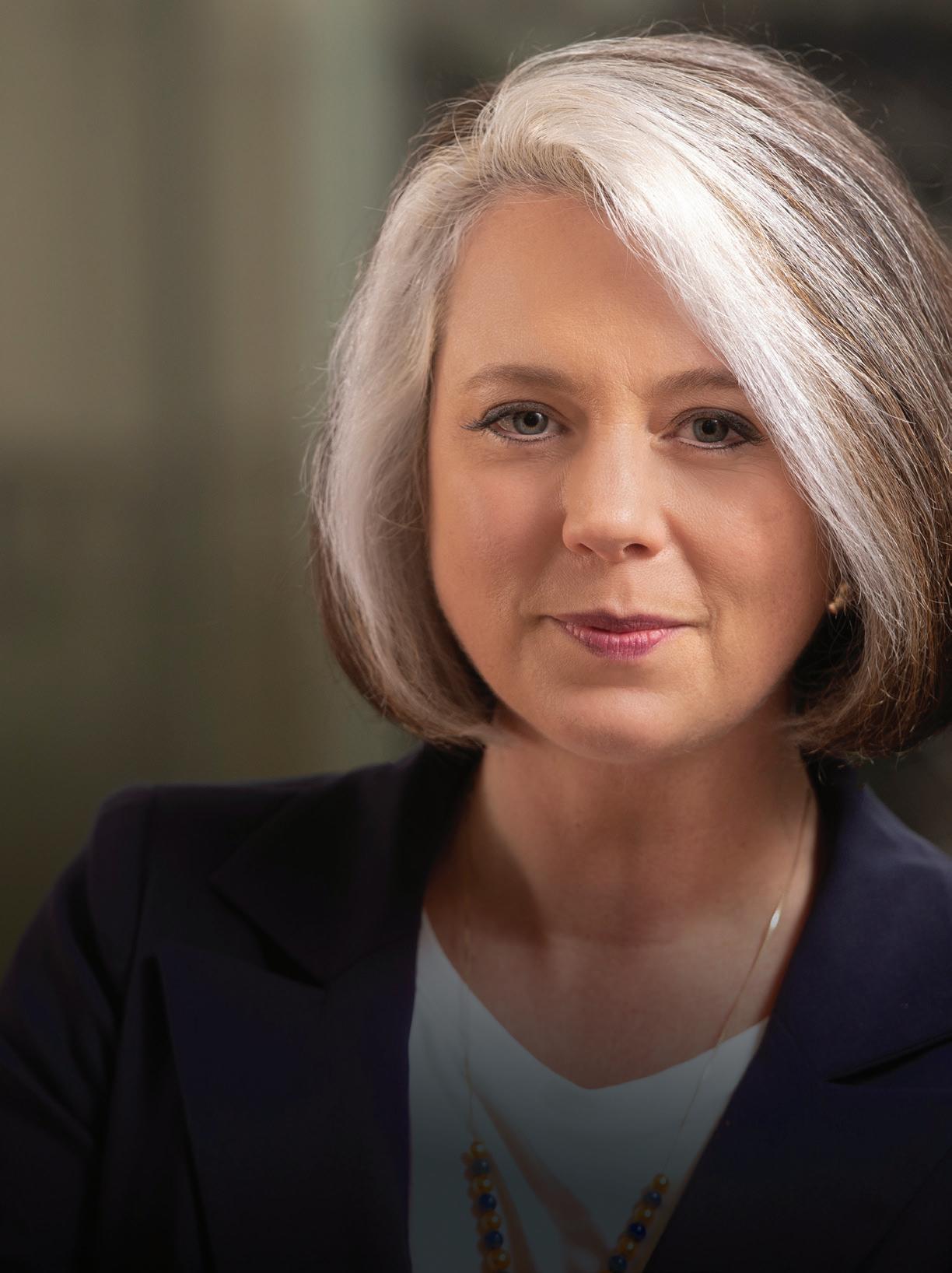
Can you share your connection to WBEC South? I had the honor of serving as the Executive Director of WBEC South from 2003 to 2006. I was just 26 when I started and 29 when I left—oh, I was such a baby! Looking back, I treasure the experience, the friendships, and the invaluable lessons I learned. WBEC South shaped me in ways I could never have imagined.
What impact did WBEC South have on your career?
My time at WBEC South was transformative. The learning and development I gained as a corporate businesswoman were invaluable. One of the greatest gifts was learning directly from WBEs— going on site visits, hearing their stories, and absorbing knowledge from each one.
I was also fortunate to have incredible mentors. Blanca Robinson, who preceded me as Executive Director, and Phala Mire, then leading the Southern Region Minority Business Development Council, were both instrumental in my growth. It’s a beautiful full-circle moment that Phala has led WBEC South.
Beyond that, I admired my board of directors—the corporate supplier diversity managers. I romanticized their roles and asked a million questions about their careers. They were so generous with their time—leaders like Susan Stentz, Madelyn Bagnaris, and Mary Ann Wafer took me under their wings. Their insights shaped my understanding of supplier diversity, and that passion has stayed with me.
What is one of your proudest moments from your time at WBEC South? One of my proudest moments was leading WBEC South when WBENC brought its national conference to New Orleans in 2005 or 2006. It was an incredible opportunity to showcase the council and highlight the powerhouse WBEs of the Gulf Coast.
WBENC gave us a massive responsibility—we essentially ran the silent auction. I remember our office being packed with donated items. Lakesha White was an absolute machine, logging inventory, organizing everything, and making sure it all went smoothly. But the most unforgettable sight? Looking out over the huge ballroom and convention center halls and seeing a sea of vivid yellow shirts—our volunteers. These were WBEs, corporate members, and council supporters, all working together. It was a moment of immense pride.
Do you have any funny or special memories? One of my favorite (and funniest) memories was a holiday event— either in Baton Rouge or Shreveport. Lakesha White (currently WBENC VP of Certification) and I decided to rent a car and drive there ourselves, loading up supplies in the office elevator at our downtown New Orleans office. Lakesha warned me, “This is not all going to fit.” And sure enough, two boxes in, we were at capacity. I had a moment of inspiration: “Get in the front seat, buckle up, and make some space.” She looked at me like I was crazy. I started unpacking the boxes, figuring that if we ditched the packaging, we could squeeze everything in. The contents? Hundreds of red Christmas stockings stuffed with swag, pamphlets, trinkets, and candy canes. By the time I was done, Lakesha was covered in stockings—on her lap, in her arms, even around her head. She looked at me and said, “I can’t breathe.” We laughed so hard. More than anything, my greatest relationship from WBEC South was my friendship with Lakesha White. We’ve been through so much together, personally and professionally, and she is truly my ride-or-die.
Any final thoughts or words for WBEC South as it celebrates 30 years? Every person I met and every relationship I built at WBEC South shaped who I am today. I wish I could have been there to celebrate. Cheers to 30 Years—and to many more ahead!

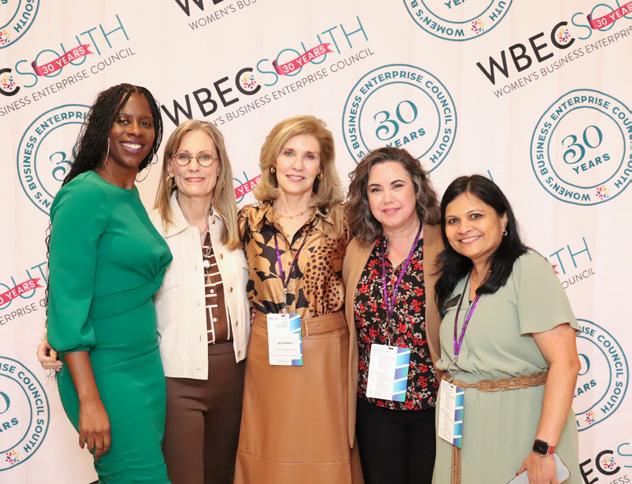
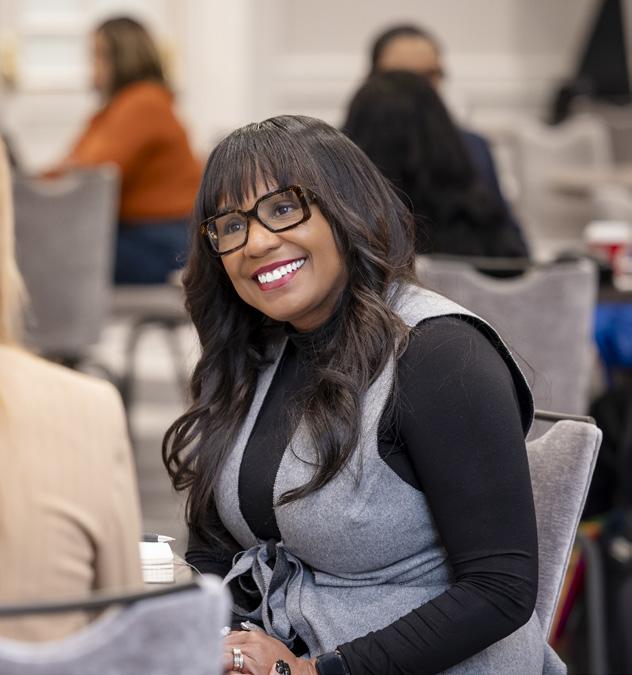
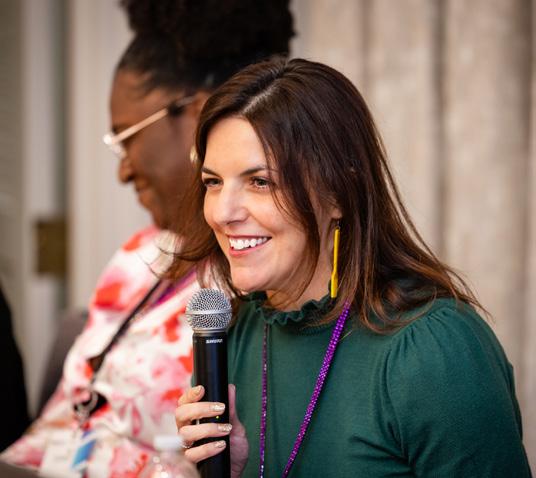

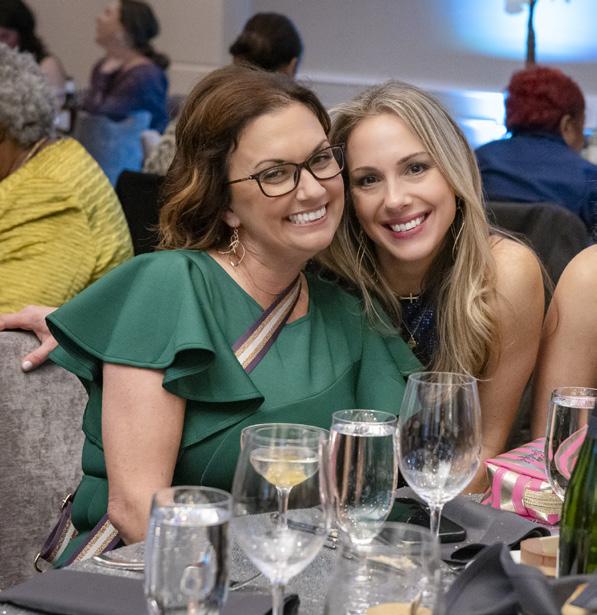
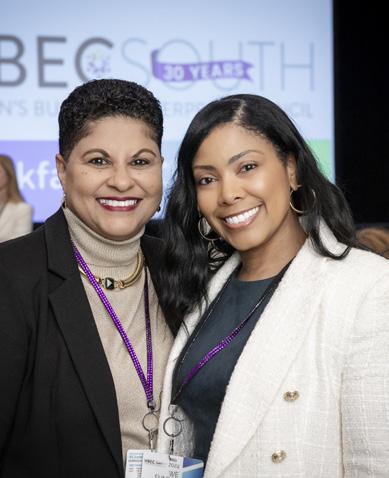
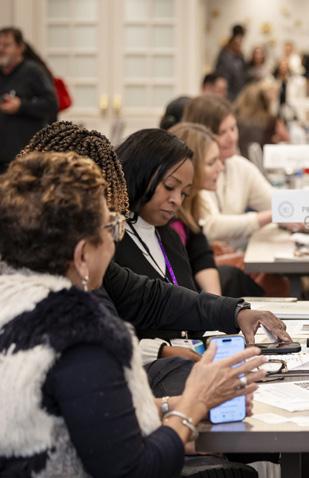
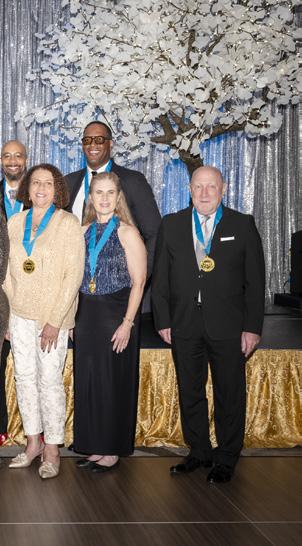
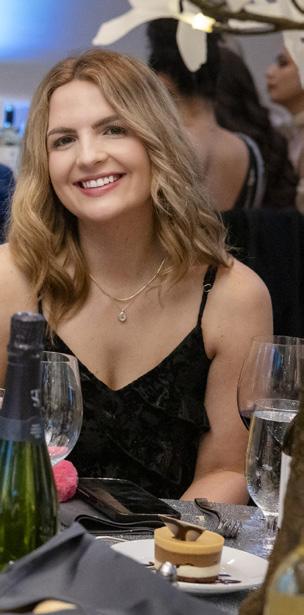

BY AMANDA MERRITT
IN DECEMBER 2024, WBEC SOUTH celebrated a remarkable milestone—30 years of empowering women entrepreneurs. The 30th Anniversary WE Summit, held at the Intercontinental Hotel in New Orleans, brought together more than 400 attendees, including WBEs, corporate members, and industry leaders, for two unforgettable days of connection, learning, and celebration.
From the outset, the summit buzzed with the energy and purpose that have defined WBEC South’s three-decade legacy. The agenda was a vibrant mix of insightful panels, dynamic industry immersion rooms, and meaningful networking opportunities, creating a space where ideas and opportunities flourished.
The WE Summit opened on Wednesday, December 4th, with WBE Forum Day, focusing on maximizing WBENC and WOSB certifications. Attendees shared best practices and gained insights into leveraging their certifications for growth. That evening, the celebration continued with a lively Welcome Reception hosted in collaboration with the Southern Region Minority Supplier Diversity Council (SRMSDC) at the WB Collective, marking its fifth anniversary. The reception set the tone for the WE Summit, combining celebration and connection with a true New Orleans flair.
Day 2 began with the annual Breakfast of Champions, featuring a thought-provoking discussion on the State of Supplier Diversity. Industry leaders Scott Vowels of Apple, Dave Feldman of Chevron, and Nancy Swartout of ExxonMobil shared their perspectives, setting an empowering tone for the day.
The morning gave way to breakout sessions tailored for women business owners and corporate procurement professionals. These industry-focused sessions—covering automotive, oil and gas, power, retail, and more—

were led by experts who shared personal stories, practical advice, and strategies for success. Attendees left with actionable insights and renewed inspiration to pursue procurement opportunities across industries.
The day continued with the signature Meet Her in the Marketplace™ event, where certified WBEs participated in one-on-one matchmaking sessions with corporate buyers. Attendees also explored pop-up shops showcasing women-owned businesses, engaged with writers at the author’s corner, and connected with peers throughout the afternoon.
The highlight of the Summit was the WE Awards and Scholarship Gala, an evening dedicated to honoring the exceptional achievements of women-owned businesses and key stakeholders. The gala recognized outstanding leaders, innovators, and advocates whose contributions have shaped the WBEC South community.
The evening also included heartfelt moments, such as the toast bidding farewell to WBEC South President and CEO, Phala Mire, whose strategic vision and leadership created a legacy that will continue to inspire the WBEC South community.
The celebration extended to the silent auction and raffle, which raised more than $25,000 to support WBEs through the Candace Waterman Scholarship Fund. This record-breaking success was made possible by the generous support of WBEs, corporate members, and friends who participated.
The 2024 WE Summit was more than a celebration; it was a testament to the strength, resilience, and innovation within the WBEC South network. As we honor 30 years of empowering women in business, we look forward to continuing our mission, fostering collaboration, and creating new opportunities for WBEs in the years to come. WE

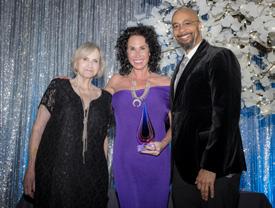
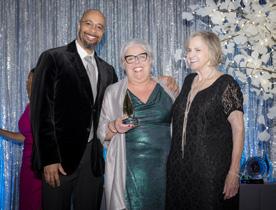
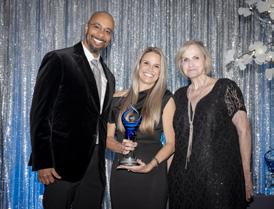


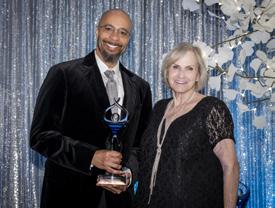

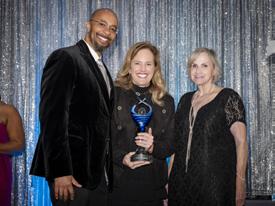
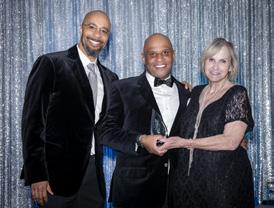

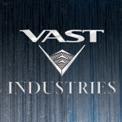

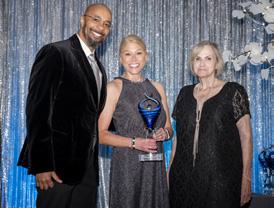
Louis Vuitton Neverfull (donated by Personalized Payroll Services)
Allison Froeba of Specialized Engineering, LLC
WBENC 2025 Conference Registration (donated by WBENC)
Misty Williams of IEP Resource Group

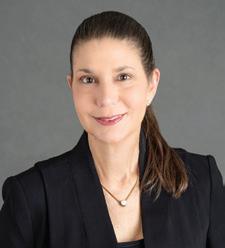
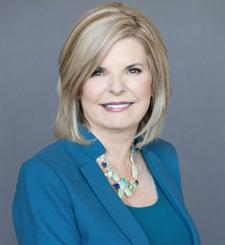
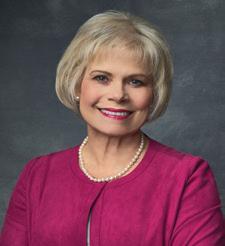

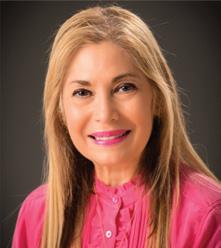

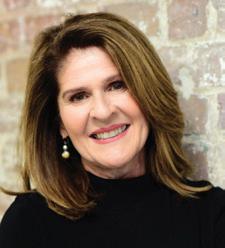
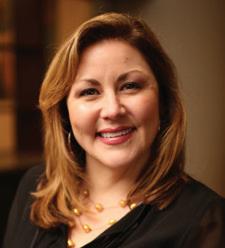

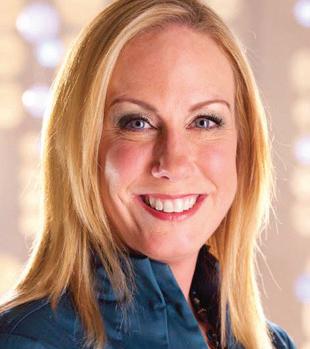


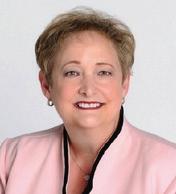
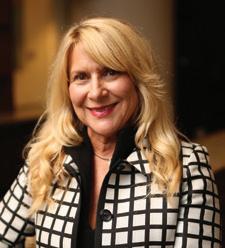



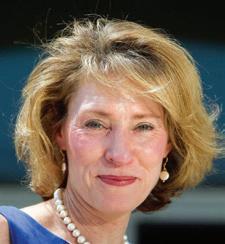
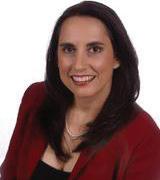
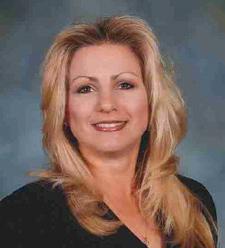
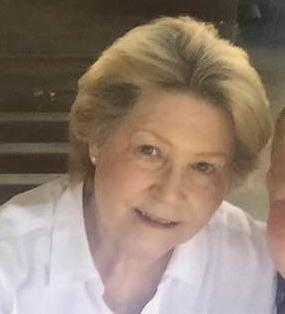
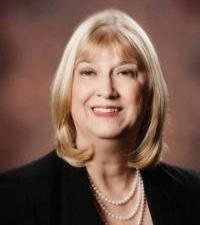
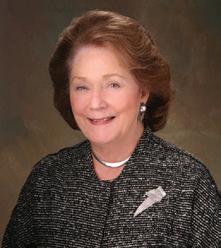
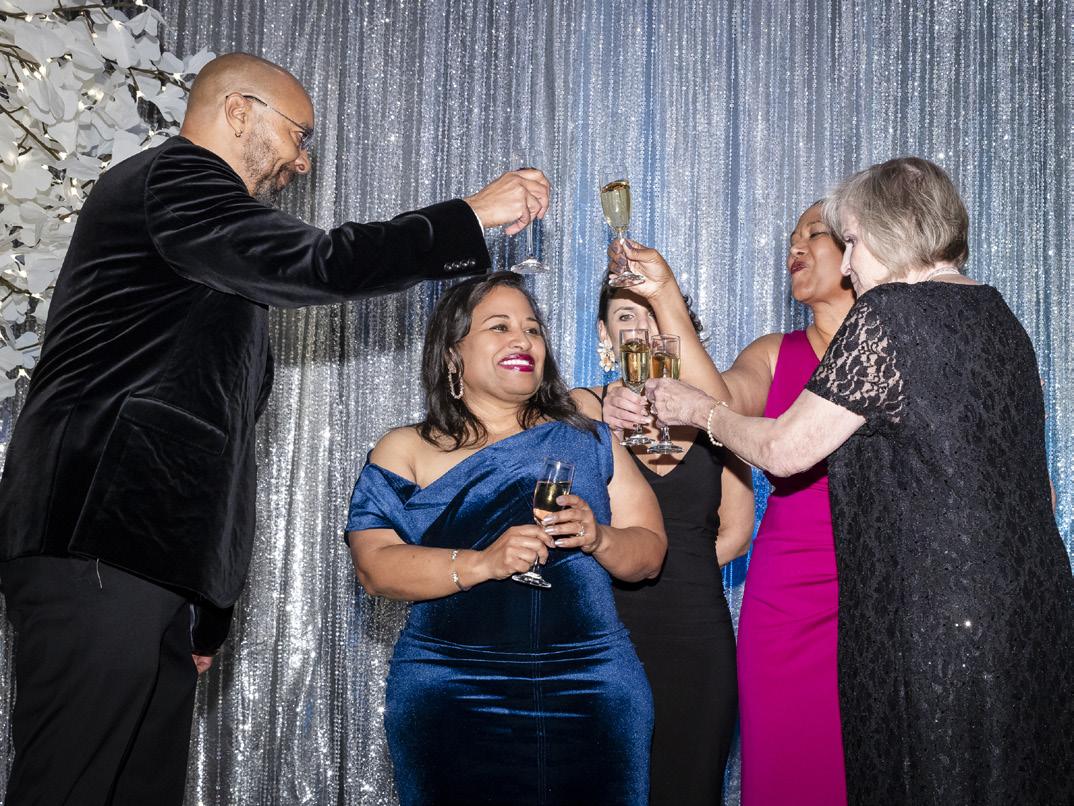
Phala Mire’s time leading WBEC South has been marked by an unwavering commitment to empowering women entrepreneurs and fostering a thriving business community. Her leadership has been instrumental in expanding opportunities, strengthening connections, and creating a lasting impact on the women-owned business ecosystem. She has approached her work with both strategic precision and a deep passion for seeing women succeed, leaving an indelible mark on the organization and the businesses it serves.
A driving force behind WBEC South, Phala led initiatives that resulted in a 60% increase in WBEC South Certified WBEs and nearly tripled the number
of Women Owned Small Businesses (WOSBs). While an impressive numerical milestone, it was also a game-changing shift that allowed more women entrepreneurs to gain visibility and access the resources they needed to scale their businesses. By strengthening certification programs and advocating for supplier inclusion, she ensured that women-owned businesses were both recognized and positioned for longterm success.
Beyond raising the bar, Phala’s leadership has centered on creating opportunities and access for women in the business landscape. She has recognized that growth requires more than certification; it requires direct connections to procurement pipelines, strategic part-
nerships, and real business opportunities. To bridge this gap, she spearheaded monthly sourcing and bid opportunity communications, ensuring that women entrepreneurs had a continuous flow of potential opportunities and corporate partnerships. Her work enabled WBEC South members to expand their businesses in meaningful ways, securing deals that would have previously been out of reach.
In addition to expanding the reach of women-owned businesses in her region, she also served as a steadying presence during times of crisis for her organization. When the COVID-19 pandemic and back-to-back natural disasters disrupted businesses across the region, she remained an unwavering pillar of strength. Her calm and strategic leadership reassured women entrepreneurs that, despite the challenges, they could rebuild, adapt, and continue to grow. She provided stability, direction, and encouragement, helping businesses navigate uncertainty with confidence.
Her vision for inclusivity also led to the expansion of WBEC South initiatives throughout the territory. Phala understood that true empowerment must be inclusive, accessible, and far-reaching. This initiative provided education on certification, supplier diversity, and business scaling strategies, helping women of color unlock exponential growth and new opportunities. Through this work, she ensured that women entrepreneurs from all backgrounds had the tools and support to succeed.
Even as WBEC South transitions into new leadership, Phala’s influence remains deeply embedded in its foundation. Her dedication to certification, coaching, procurement, and education have created a resilient infrastructure that will continue to uplift women entrepreneurs for years to come. She has cultivated an environment of trust and collaboration, ensuring that the relationships and programs she built would remain strong.
More than a leader, Phala has been a mentor, advocate, and visionary for women entrepreneurs. Her efforts have reshaped the narrative of what women-owned businesses can achieve, proving that when women are given the right opportunities, they can thrive, lead, and transform their industries.
Her legacy is one of strength, innovation, and empowerment. Phala Mire has demonstrated that women-owned businesses are more than economic contributors, they are changemakers. Through her work, she has proven that when women succeed, entire communities flourish, new opportunities emerge, and lasting change is created. While Phala is entrusting her legacy at WBEC South to a new leader, I am personally thrilled that she will remain in the WBENC network in her new role. WE
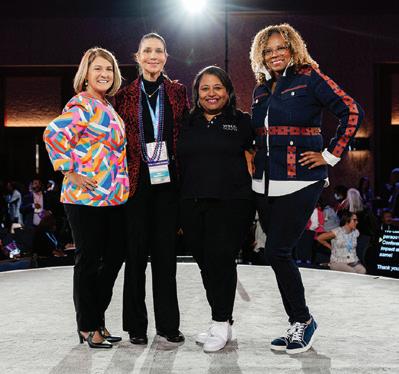
As WBEC South continues its mission to empower women entrepreneurs, one of the most exciting opportunities on the horizon is the 2025 WBENC National Conference, set to take place June 23-26 in New Orleans, Louisiana. This premier event brings together corporate executives, government agencies, and women business owners for networking, educational programming, and dynamic business-building opportunities.
This year’s theme, ACCELERATE , is a call to action, an invitation for women entrepreneurs to break barriers, set bold goals, and propel their businesses forward with purpose.
To learn more, please visit wbenc.org/conference
BY DIANA SANCHEZ-VEGA, FOUNDER & CEO, SANCHEZ-VEGA
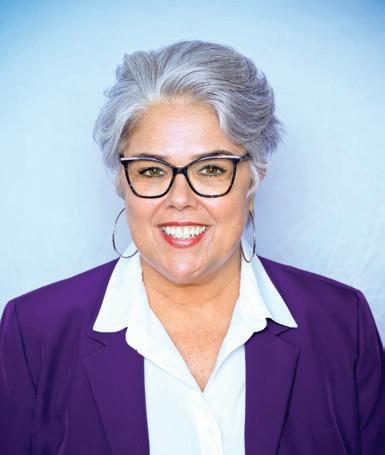
Editor’s Note: The WBENC annual pitch competition is a national contest that attracts dozens of participants from across the nation representing their regional partner organizations and culminates in Washington, D.C. for the dramatic live finals in front of a panel of judges. Without a doubt, it’s a major highlight for members of the WE Forum during Unity Week to watch the final live competition and hear outstanding pitches from 24 women-business owners in both products and services categories. The first place winners receive a $25,000 grant to invest in their business and runners up receive $15,000. If you’re interested, the annual pitch cycle begins in April. Watch your inbox to apply!
We asked WBE Diana Sanchez-Vega, Founder and CEO, Sanchez-Vega Communications, to share her perspective on the 2024 WBENC pitch competition experience. Read below for her insights.
Iwas born and raised bilingual (Spanish/English) and bicultural in Argentina. I moved to the U.S. in 1999 and started my business, Sanchez-Vega Communications, in 2003. We help organizations build a multilingual culture in the workplace by identifying assets, gaps, and opportunities, and then develop an effective and sustainable infrastructure and implementation plan for multilingual communications. Additionally, our ‘Monetize Bilingualism’ program coaches bilinguals to be interview-ready with employers and trains them to be interpreters.
I decided to apply to the WBENC pitch competition to learn how to pitch my business. I work in language access which is a “newer” industry and it has not been easy to explain what I do. I know the “pain points,” but briefly articulating a new integrated solution to a complex problem has been tricky for corporate listeners to understand.
When applications for the AMPLIFY Pitch competition opened, I said to myself, “Why not?” And I’m so happy I did. It was an amazingly productive engagement, all the way to the national finals!
I’ve been a speaker all my life, and this opportunity presented a challenge that would both solve a problem and make me a better speaker. I hoped to gain clarity and confidence when pitching my business. The most valuable thing I learned through the process is how to reframe my business and how to talk about the solution my business offers in a more nuanced and clear way. I learned how to be clear in my pitch with less verbiage, and I have already started to apply that.
I would tell any WBE to Go.For.It! If you feel scared that you can’t do this, know that you are supported, encouraged, and cheered from the beginning. It helps you to see your business from both the inside and the outside, so that you can get specific. You will

also establish new connections. It’s another way to network and get your business in front of corporate representatives in a more social, amenable way. I would definitely do it again as I am the eternal student. Here’s a rundown of my wonderful experience, and why ANY WBE who participates can win along the way:
1-minute Pre-recorded Video Pitch Submission
PITCH FOCUS Business Overview & Differentiator
PROCESS I used my regular “elevator pitch,” and expanded on my differentiator, using AI tools to create multiple versions of what I wanted to say. Takeaway: 60-seconds is not much time, so I cut back on the number of breaths I took, while maintaining clear articulation.
LEARNING Wardrobe is important but lighting and sound are critical. Focus on the latter first.
OUTCOME I got selected to pitch at the regional level!
PITCH FOCUS Business Introduction
PROCESS To fill the two minutes, I expanded on my background and differentiator.
TAKEAWAY Input from my assigned coach Sheila Mixon was invaluable.
LEARNING Q&As are not that hard if you first take a couple of seconds to think about the answer.
OUTCOME I moved onto the semis!
1.5-minute
PITCH FOCUS Business Solution
PROCESS Following the judges’ feedback, I clarified my offering and solution.
TAKEAWAY When there’s a specific focus, it’s easier to deliver a shorter pitch than a longer one.
LEARNING Clarity from interactions with coach and judges – what a gift!
OUTCOME OMG! I moved onto the finals!
Round 3 – National Finals: 2-minute Pitch + 2-minute Q&A, Live In-Person at Unity Week Conference, Washington, DC
PITCH FOCUS Business Value
PROCESS Following judges’ scores, I reworked all the versions I had and built a solid pitch.
TAKEAWAY Input from my national assigned coach Brooke Foley, CEO, Jayne Agency, was a gamechanger.
LEARNING I can succinctly talk about my business with confidence.
OUTCOME Real business exposure, and an unbelievable sense of achievement and pride!
The WBEC South team and board of directors supported me and cheered me on all along. The WBENC national team equally embraced me as I navigated the last two rounds.
Although I didn’t win prize money, I won by connecting with people on both the regional and national levels who now know who I am and what I do and have seen me “in action.” I also participated in matchmaking sessions in D.C., where I started conversations with two national corporations and one federal government agency about potential work.
I encourage ANY WBE to participate in the pitch competition. It will give you and your business a boost and show you different ways to speak about your business, while connecting with others who are doing the same, and being truly supported.
If you find yourself unsure about it, ask yourself, “Why not?” You may be pleasantly surprised by a positive answer. It always works for me! WE
LEARN MORE AT SANCHEZ-VEGA.NET AND FOLLOW WBENC PITCH OPPORTUNITIES AT WBENC.ORG/PROGRAMS/WBENCPITCH/
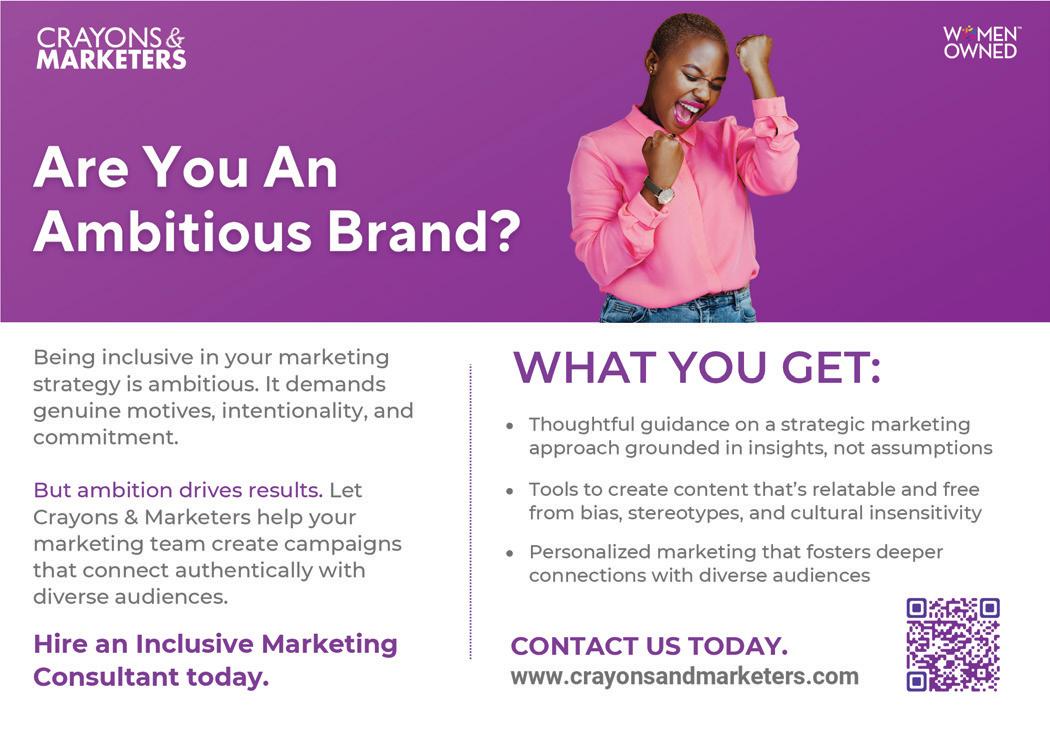
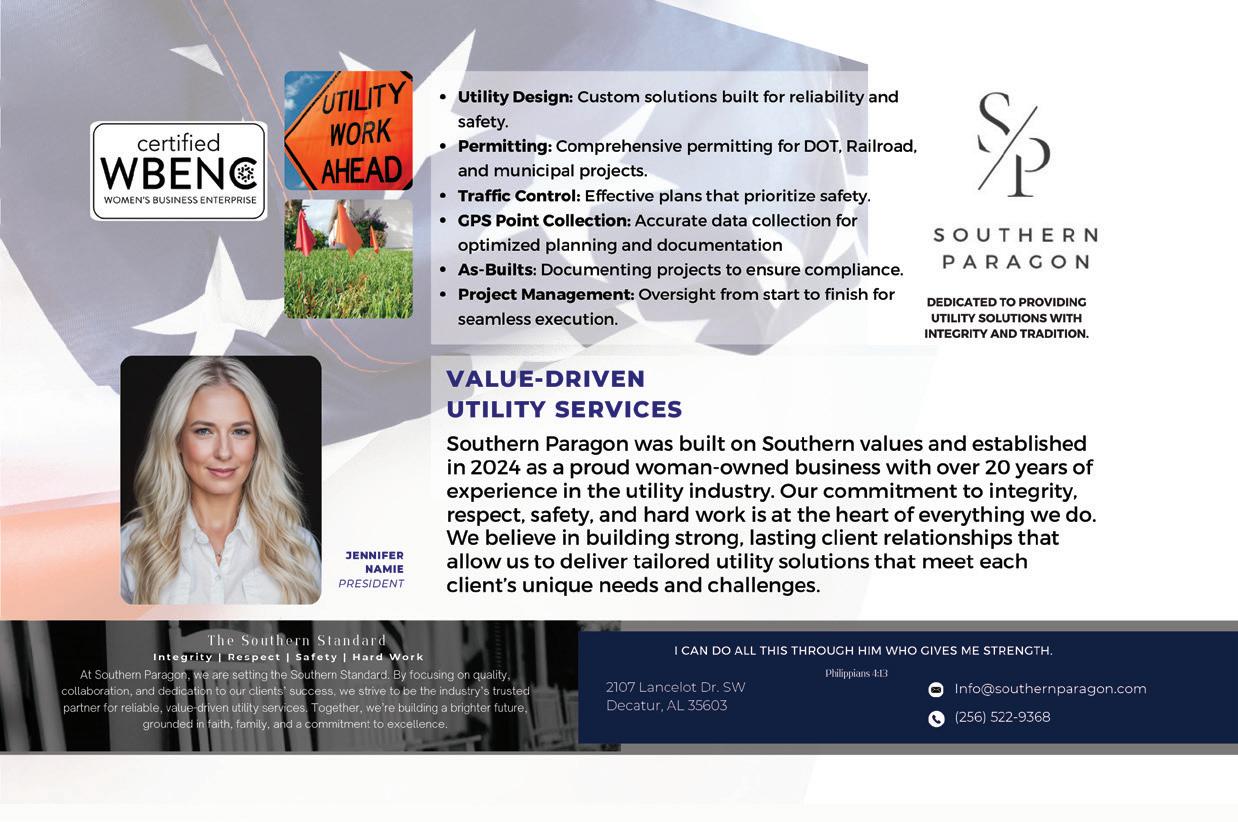


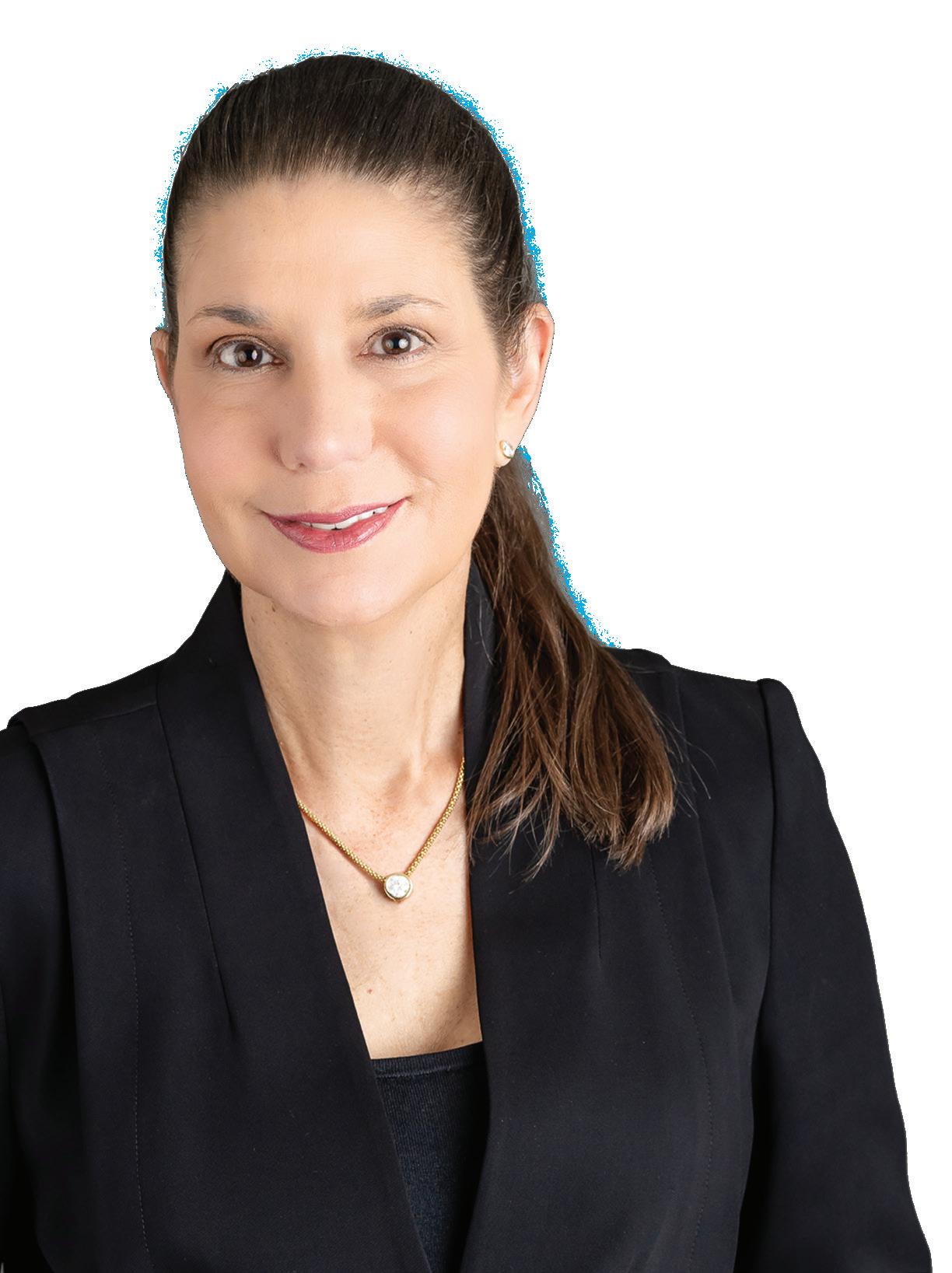
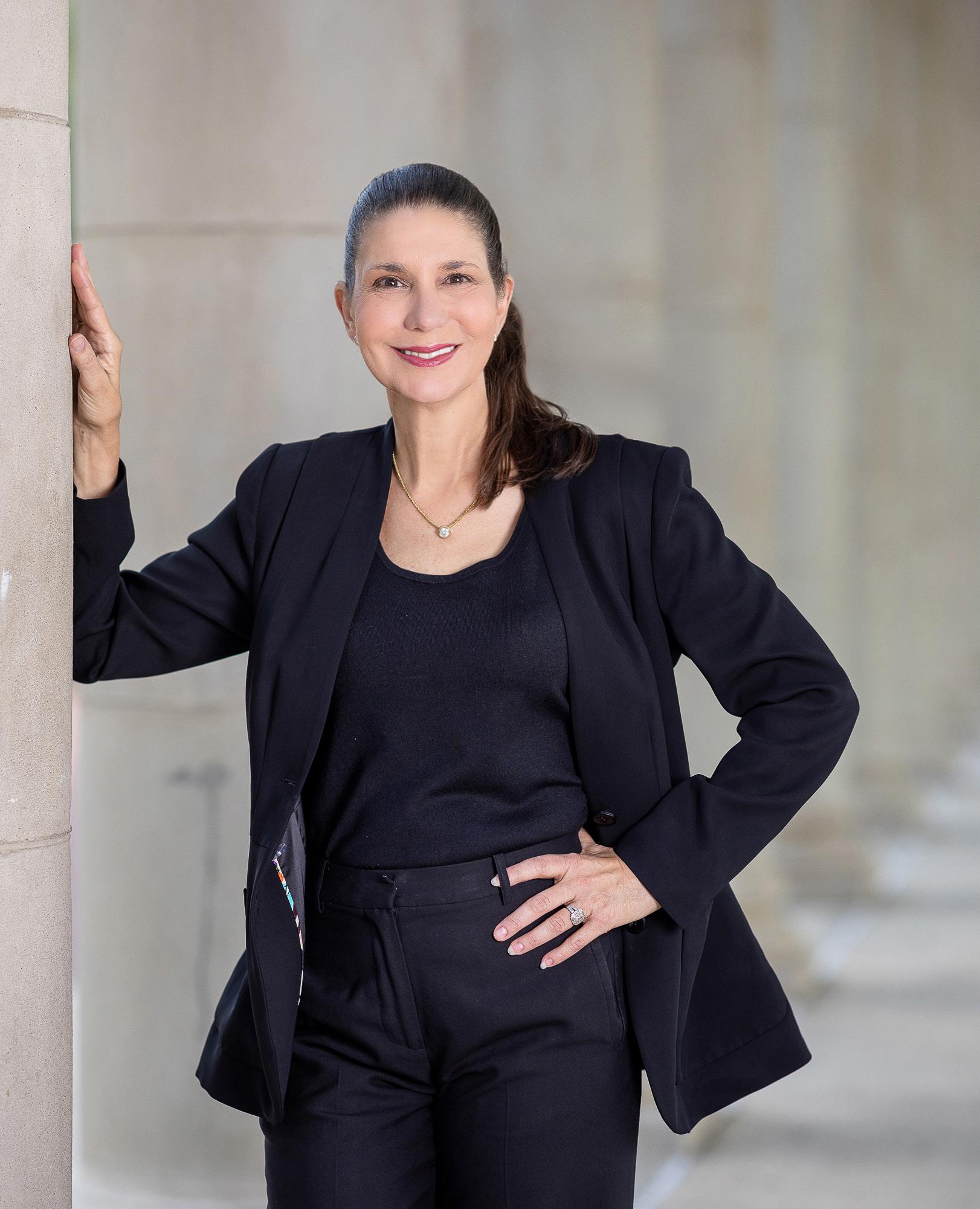
Working in the family business was expected of Pat Thomasson, CEO, Thomasson Company, when she was growing up in Philadelphia, Mississippi. She was about 12 years old when she received her first 1099 stuffing envelopes for Thomasson Company, a wholesale lumber business started by her late father, Hugh Thomasson, in 1972. Her mother, Helen Thomasson, still works in the company and serves as treasurer.
“I got my first bank account in my early teens. Every day after school, I would go to the office and sometimes I was helpful and sometimes not,” says Thomasson with a laugh. “I ran the mimeograph machine and later the copy machine. I put postage on letters for mailings. I was always expected to work in the business and learn how to work.”
In those early days, it wasn’t all work and no play. She was able to travel with the business too. “I got to go to different conventions with my parents. As an only child, it was easier to take me than leave me,” she says. “I got to see some nice places and met some other young people in the industry. I went swimming, walked on the beach and the property, and played tennis with other kids also there.”
Thomasson was born in Philadelphia and spent the majority of her life in the area. She earned her Bachelor of Accountancy and Master of Accountancy degrees from the University of Mississippi. A licensed CPA, she moved to New Orleans for a job at Arthur Anderson and then served with the Secretary of State in Jackson, Mississippi.
A couple of decades later, Thomasson received a call that she was needed to help out with the family business. She was commuting from Jackson to Philadelphia and finally moved back in 2002. She explains, “Things were in flux at Thomasson and my parents asked me to come back and help them out. I took a month’s leave and finally resigned my job. I learned a lot dealing with a lawsuit the company was involved in and helped with documentation. It was regarding a product we sold and the chemical company knew it was bad. It took four years to sort out.”
During that time, Thomasson helped improve operations at the company and establish policies and procedures that a small company needs in place to grow efficiently. She had the right talent and skills the company needed at the right time and her passion for the business grew. “I focused
>
Pat Thomasson,
CEO, and her mother Helen Thomasson, Treasurer, work side by side at Thomasson Company.

more on the financial side. I cared about the company. It’s something that was part of my childhood and something I looked to as an adult,” says Thomasson. “I saw employees as family members. The company was just part of me. I cared deeply about it. It made me joyful. I care about the people we impact.”
Thomasson Company started as a brokerage company selling dimension lumber to distribution companies, local building supplies and construction companies across the Midwest and Northeast. Then the business started selling utility poles to phone companies and later to co-ops, municipalities, and investor owned utilities. The company bought their first pole plant in 2005 and expanded manufacturing.
Before her father passed away in 2008, Thomasson became CEO. “We were really heavy into consignment programs and kept large inventories. It was as much accounting as sales, and we made our mark in the industry.”
Thomasson Company earned a woman-owned certification from the State of Mississippi from the Mississippi Development Authority, a designation they had for more than a decade. As a natural progression of their growth, the business became nationally certified as a Women’s Business Enterprise with WBENC in 2009.
Around 2012, Thomasson Company expanded into the matting business and purchased their first hardwood mill in 2016 in Yazoo City, Mississippi. A few years later, they bought another mill in Texas. Most of their customers are located East of the Rockies and this growth provided an opportunity to offer lease programs. As a result, their customer base expanded from New Mexico to Maine and across the Southeast. This national growth contributed to the expansion of Thomasson Company to 45 employees at the main operations in Philadelphia and another 70 employees at sister companies.
Thomasson reflects, “I think certification has helped greatly with the number of contacts who become our customers. We see different people at a broad range of events in the industry including national associations and trade shows. We meet a variety of contacts at corporations from engineers to purchasing agents and diversity professionals to the C-Suite. It helps us to form different relationships at companies and look for open doors.”
“Some departments don’t realize they care about diversity until they realize you’re a diverse company,” she says. “A good supplier diversity person will help you, introduce you, know what you need in your toolbox before you approach. Twenty-five years ago, none of my salespeople thought certification was important and now companies are asking about it. It’s on their mind and they know why diversity matters. Certification helps companies fulfill their mission and grow their market.”

> Pat Thomasson (above) and Helen Thomasson (right) are growing the family business in its 53rd year in Philadelphia, Miss.
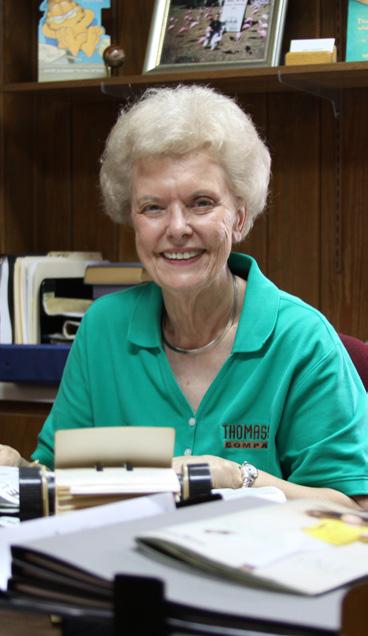
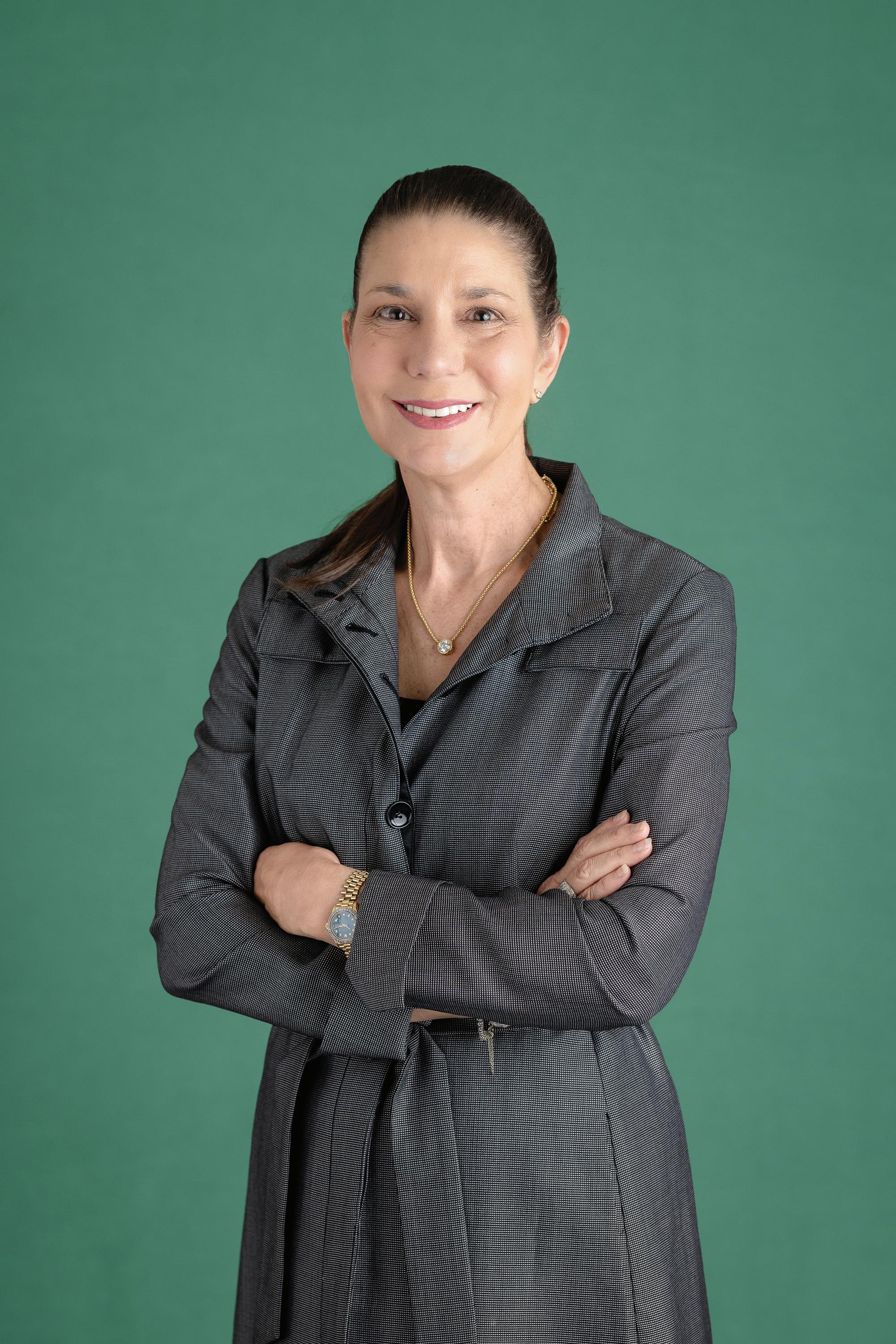
" I've had tremendous growth serving on the board of WBEC South, and it's part of my community.... I believe the more you give the more you get."
Under her leadership, Thomasson Company has received numerous awards and recognition. The company received the 2012 Mississippi Governor’s Cup Award for Small Business, 2015 Neshoba County Large Business of the Year Award, 2016 ONCOR Omnis Supplier Award, 2016 Iberdrola Diversity Supplier of the Year finalist, 2017 Vistra Energy Supplier Diversity Gold Star Supplier Award and 2019 Supplier of the Year Award by WBEC South.
She’s earned several individual awards for her business leadership and community service including the 2014 Business Woman of the Year Award by the Mississippi Business Journal, 2014 Volunteer of the Year Award from the Neshoba County Literacy Council. Thomasson has won multiple awards from WBEC South, including the following: 2014 Champion Award, 2016 Mississippi Volunteer of the Year Award and 2017 Volunteer of the Year Award.
that every business function is essential and important. We had a lot of ups and downs, but my parents taught me to be strong, work hard and appreciate my coworkers.”
“My dad was a ball of energy and seemed to be fearless. My mom is 88 years old and the ultimate pragmatist. She walks a mile in the morning and comes into the office to make sure we are on track.”
The climb to running a successful business hasn’t been easy, even for someone who grew up in the business. “I know what it’s like to be the first woman on the board. If I can’t make a difference with my time, I don’t want to be there in name only. There are obstacles every day. My biggest obstacle was myself and putting life into perspective. I’ve been blessed to be part of so many things, and I try to live every day for what I can get out of it. I have a great team and we work together. I know I don’t have to do anything by myself.”
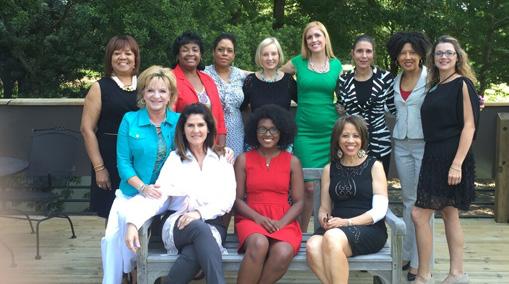
Over the course of her career, she has served in many leadership roles with civic and professional organizations. She is a past chair and board member of the Mississippi Manufacturers Association, past president of the Mississippi Lumber Manufacturers Association, past president and board member of the Community Foundation of East Mississippi and past president of the Philadelphia Rotary Club. She is an active member of the board of directors of WBEC South, serves on the Mississippi Forestry Commission and is the chair of the Mississippi Economic Council, the State Chamber of Commerce.
Thomasson follows a simple business philosophy, “Do unto others as you would have them do unto you.” She elaborates, “I think it’s important to serve our fellow man. I think God wants us to serve. I’ve had tremendous growth serving on the board of WBEC South, and it’s part of my community. I’ve grown as a person doing it, and I enjoy attending events. I believe the more you give the more you get.”
She’s still inspired by the lessons her parents taught her every day in the business. “My parents were better at different things, but they both helped me to appreciate
She tells her fellow WBEs to enjoy the ride along the way. “I love to play bridge. I have a bridge club that plays twice per month and play with my mother every Saturday with a few of her friends. They are all at least 25 years older than me so they say what’s on their minds. I love sports, especially Ole Miss Lady Rebels basketball, volleyball, softball and football games. Sometimes I’ll support Mississippi State, too.”
With all of her success, awards and accolades, she’s most proud of the difference Thomasson Company has made in the community to bring jobs and give back to the community. Thomasson Company is still going strong, now into its 53rd year in business and not slowing down. “As long as companies need us, I hope we’re able to help them out,” says Thomasson.
Thomasson shares regarding her WBE Star experience, “It was truly an honor being the Star. Being recognized was wonderful. Nothing will ever beat seeing my mother when I received the award. She was extremely proud of me and knows what the organization means to me. It was really great to be recognized for our company and the work we do. For WBEC South and Thomasson Company, I can’t wait to see what lies ahead.” WE

For women-owned enterprises, 2025 brings both exciting opportunities and new challenges in cybersecurity. Advancements in technology and a growing digital economy mean there are more tools than ever to strengthen businesses. However, they also come with risks that can disproportionately impact small and medium-sized businesses, many of which are women-led. Here’s a look at some key cybersecurity trends to watch and how you can stay prepared.
BY THERESA JONES, CSA, CMMC-RP, FOUNDER,
Artificial intelligence has become a game-changer for businesses, helping automate operations, analyze data, and even improve customer service. But as AI use grows, so do the risks. Cybercriminals are increasingly exploiting vulnerabilities in AI systems, targeting faulty algorithms or injecting malicious data during training processes.
For women entrepreneurs leveraging AI, securing these systems is non-negotiable. Start by partnering with vendors who prioritize AI security and regularly update their software. Consider conducting thorough audits of your AI tools to ensure they are resistant to manipulation. Training your team to identify anomalies in AI behavior can also serve as an early line of defense.
Data is the lifeblood of any business, from customer databases to financial records. With growing global focus on privacy regulations, such as GDPR and CCPA, meeting compliance requirements has become a must. These regulations are crucial for maintaining customer trust but can feel overwhelming to small enterprises.
Women-owned businesses often emphasize personalized customer relationships, so data protection can’t be an afterthought. Make sure you implement strong encryption methods and limit the amount of sensitive information collected. Platforms that offer built-in privacy features can also be an excellent investment.
Additionally, review your data-sharing agreements with third parties. If a breach occurs due to their negligence, it could have ripple effects on your business. Transparency about how customer data is stored and used will keep you compliant and build trust.
Human error remains one of the weakest links in cybersecurity. For smaller enterprises without full-time IT teams, phishing attacks and malware can target employees who aren’t well-equipped to spot red flags. Interestingly, women across industries have shown higher levels of attention to detail when trained on cybersecurity awareness, making this training a key advantage.
Equip yourself and your employees with basic cybersecurity knowledge. Simulated phishing tests, regular workshops, and quick refreshers on password hygiene can go a long way. A strong culture of awareness ensures your enterprise is less likely to fall victim to avoidable threats.
ADOPT MULTI-FACTOR
AUTHENTICATION (MFA)
Protect critical accounts by requiring an extra layer of verification.
INVEST IN ENDPOINT PROTECTION Devices like laptops and smartphones used by your team can be entry points for hackers.
BACK UP CRUCIAL DATA
Regularly back up your data to prevent losses from ransomware or technical failures.
USE CYBER INSURANCE
This can provide a safety net if your business faces a breach or attack
By staying ahead of these trends, women-owned enterprises can safeguard their operations and continue to thrive in an era of growing cyber risks. While the tools and tactics of cybercriminals evolve, so too can your defenses. After all, protecting your business starts with staying informed and proactive.
Keeping ahead of the technological advances in the telecommunications industry must feel like you’re operating at the speed of light. Rapidly evolving technologies such as AI, 5G and the growth of wireless networks is a highly competitive, $2.26 trillion global industry. Jennifer Pentecost Sims, CEO, Power & Tel, is the third generation owner leading a transformation at the 62 year-old company. A certified Women’s Business Enterprise by WBENC, Power & Tel is a worldwide distributor of telecommunications equipment and services with operations in the U.S., Canada and Mexico. Sims spent more than 20 years in the business leading Power & Tel Canada before becoming CEO in 2013.
Sims is on a growth trajectory, having relocated the global headquarters to a new 250,000 square-foot sustainable campus in 2020 in Piperton, Tenn., near Memphis. Power & Tel was named a Top 5 Women-Owned Business in 2023-2024 by Memphis Business Journal and Sims was recognized in the publication’s Women Who Lead series. She contributes to the advancement of the industry, serving in many roles including Chair Emeritus for the Women in Cable Telecommunications Chapter of Greater MemphisJackson, and formerly as their Board President. She also served as Treasurer on the Executive Boards of Directors for both QuEST Forum and the Telecommunications Industry Association (TIA).
Sims holds an MBA with concentrations in Finance and MIS from the University of Tennessee and her Bachelor of Arts in Communications from Vanderbilt University. Sims has also received her CTM Certifications through the University of Southern California (USC) and certification from Stanford University’s Graduate School of Business YPO Executive Program.
Power & Tel has a tradition of supporting the communities in which it operates through education initiatives, a scholarship fund, volunteering and furthering broadband service in underserved communities. The company donated their old headquarters in Bartlett, Tenn. to Ave Maria Home, a long-term care and retirement community, and a former warehouse to the nonprofit Binghampton Development Corporation.
Power & Tel is one of WBEC South’s newest Champions Circle sponsors. The company was honored at the 30th Anniversary WE Summit & Awards Gala by receiving the Supplier of the Year Award Class IV. WE

WE South conducted a Q&A with Sims to learn more about this thriving company.
Q: TELL US ABOUT YOUR COMPANY'S FOUNDING.
A : Power & Tel was founded in 1963 by my grandfather, Miller Pentecost, with a vision to be a reliable source for contractors needing tools and products to complete their projects efficiently. He believed in building strong relationships with manufacturers to streamline storage costs and align product offerings with customer needs. Today, we are proud to remain a family-owned business. As CEO, I lead a dedicated team of over 400 employees, operating ten distribution centers in the U.S., three in Canada, and one in Mexico.
Q: WHAT PRODUCTS AND SERVICES DO YOU PROVIDE?
A: We specialize in providing communications products from over 800 manufacturers, including fiber, cabinets, closures, pedestals, cabling, duct, hardware, and network electronics. However, our role goes far beyond distribution. We position ourselves as an extension of our customers' supply chains. Programs like our Power & Tel Managed Inventory (PTMI®) system exemplify our commitment to streamlining material and logistics management, helping our customers operate more efficiently. BY
Q: WHAT TYPES OF CUSTOMERS DO YOU SERVE?
A: Our customer base spans entities involved in building and maintaining communication networks, from broadband service providers and contractors to manufacturers looking to enhance their supply chains. We are committed to serving those building broadband highways.
Q: WHAT STRATEGY IS KEY TO YOUR GROWTH?
A: Our growth strategy revolves around leveraging technology to meet the ever-changing needs of our industry. We continuously invest in cuttingedge technologies, operating systems, process improvements, and quality controls to remain a cost-effective and efficient source for our customers. User-friendly interfaces and innovative programs like PTMI® help us optimize supply chains while staying adaptable in a dynamic market.
Q: WHAT MAJOR CHALLENGES HAVE YOU FACED IN YOUR COMPANY?
A: The telecommunications industry is constantly evolving, and staying ahead of these changes has been one of our biggest challenges. To address this we’ve made significant investments in technology and process improvements. By offering scalable material management and logistics solutions, we help our customers reduce costs and efficiently manage supply and demand. These efforts allow us to remain a trusted partner in their success.
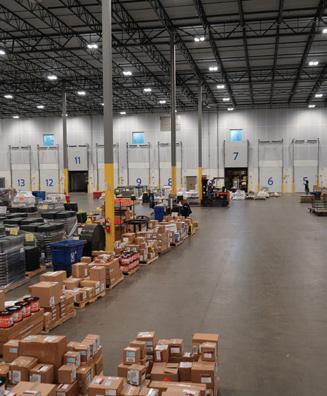
Q: HOW HAS YOUR WBENC CERTIFICATION BENEFITTED YOUR BUSINESS?
A: Our commitment to the diversity efforts of our customers and business partners is recognized by several certifying entities and has been a significant milestone for us. This recognition has enhanced our visibility and credibility in the market, reinforcing our commitment to diversity and excellence. It has also opened doors to partnerships and opportunities with businesses and organizations that prioritize participation.
Q: WHAT’S NEXT FOR POWER & TEL?
A: We are focused on continuing to adapt to the everevolving telecommunications industry. This means further leveraging technology, investing in innovations, and building on our trusted relationships with customers and manufacturing partners. Our goal remains the same: to provide efficient, reliable supply chain solutions that empower our partners and advance the communications industry.
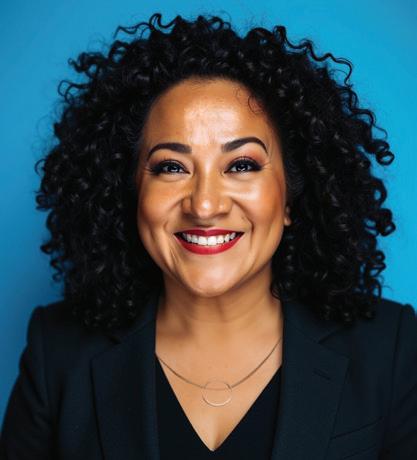

Born and raised in El Salvador, Luz Lobos came to the U.S. to attend college and pursue her passion for architecture. She soon fell in love with branding and design after recognizing a gap that companies were experiencing in marketing and trade show design. She founded her exhibit and trade show company, Synergy Design Group, in 2000 in New Orleans. She has experienced many ups and downs in the industry, from 9/11 to Hurricane Katrina to the pandemic. Each time she had to start over, she recommitted to the business and focused on what she could control to move forward.
Going through so many adversities ultimately made the team stronger. “One of the biggest problems we had was that we were our own bottle necks. I knew I had problems with installation and warehousing that I had to navigate,” says Lobos. She overcame those barriers and was back on track growing the business and working across industries including retail, maritime, technology, pharmaceutical and manufacturing.
Lobos was looking to expand her business into the Nashville market and had a difficult time finding the right space. “We started having several events in Nashville and realized we could serve our clients better in Chicago, Boston and Atlanta from there. Nashville kept coming up and I was putting it out into the universe.”
“Some things are meant to be if it’s the right time and place,” says Lobos. “I don’t consider it luck but if you put in the energy and focus, it will happen if you’re flexible.” Synergy Design Group hired a project manager in Nashville working out of the WB Collective located downtown. Lobos started looking at warehouse space to accommodate her growing business. She required tall ceilings and raised docks but found the available commercial real estate in the city did not meet her needs.
She got a helping hand from WBEC South president and CEO Phala K. Mire, who told Lobos she may have a connection for her to meet. Mire facilitated an introduction to Joan LaGrasse, CEO Imagen, a corporate interior design and exhibit company, based in Nashville.
In early Summer 2023, Lobos and LaGrasse met and started talking seriously about an acquisition. The stars seemed to line up. Lobos says, “She was 15 minutes from downtown with offices and a warehouse three times the size of our New Orleans space. It aligns with our vision and it’s the right thing to serve our clients with more diversification.”
> Synergy Design Group won two 2024 Gold Awards at the Hermes Creative Awards for this Maritime Partners exhibit.
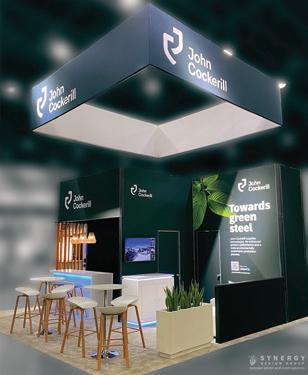
LaGrasse was looking to retire after building a successful business for more than 20 years bringing clients’ dreams to life with immersive trade show exhibits for companies such as Amazon, CVS, FedEx, HCA, Nissan and Toyota. LaGrasse built a dynamic business and was active in leadership in the WBENC network, often making introductions for WBEs, providing mentorship and helping them grow their businesses. She served on the WBEC South board of directors and WBENC board and earned numerous awards throughout the years including being recognized as a 2016 WBE Star and inducted into the WBE Hall of Fame in 2020.
LaGrasse was a founding member of the Nashville chapter of the Women Business Collaborative and Imagen earned client recognition including a Ruby Award from CVS and the Blue Heron Leadership Award by Radnor Lake State Natural Area.
“I never thought I would retire until I found someone as passionate about serving our clients as Luz Lobos and team,” says LaGrasse. “An inte-
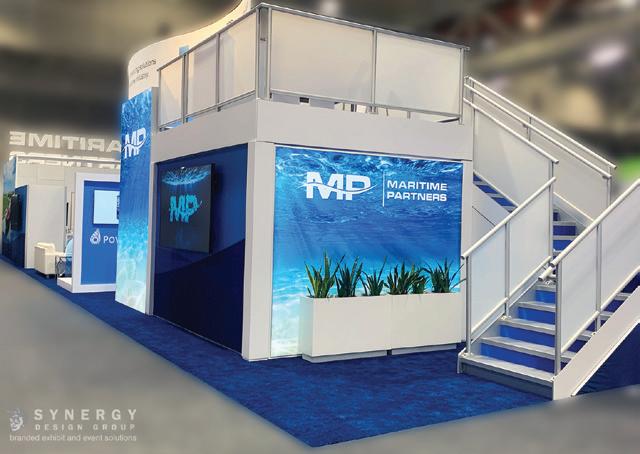
gration like this enables a greater client experience by leveraging the talents of two uniquely skilled groups to meet the evolving landscape of experiential marketing.”
The acquisition was completed in May 2024 and has more than doubled the Synergy Design Team workforce, expanded its national footprint and design capabilities, and opened the possibility for further innovation in the industry. Regarding what she’s learned from the acquisition Lobos shares, “I underestimated the time it would take for the integration. We’re aligned and our core team mentored new team members. We often don’t spend enough time investing in our culture. We have quarterly meetings and bring in speakers or a coach to keep our team learning. How do we help our team grow? They didn’t see it as competition, it was a moment of growth.”
The companies had different ways of working but a shared an affinity to deliver the best for their clients. “I didn’t have as much experience on the fabrication side coming from a concept to the build,” says Lobos. “Now we’re working with carpenters who are talented craftsmen and we’ve learned a lot from the team in Tennessee. We’re still the same team as before with a few changes. It takes months to build that trust.”
The acquisition has opened more doors and Lobos sees the expansion of their offerings and increased capacity to better serve geographies and pursue larger clients. “It’s a breath of fresh air to get to the next level, elevating and learning, setting us up for continued growth. We can do branded interiors including signage and branding. It’s been kind of fun. We’re building custom props for activation at events.”
Synergy Design Group celebrates its 25th Anniversary in 2025 and with 30 employees wants to keep growing the team and their capabilities. “The acquisition has been reinvigorating. We learn from each other. Team members understand and love what they do and want to represent the company at different events. With the quality of the
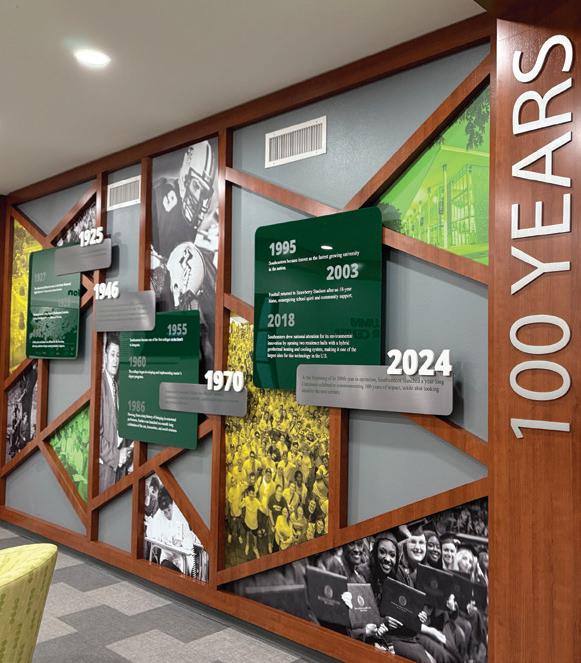
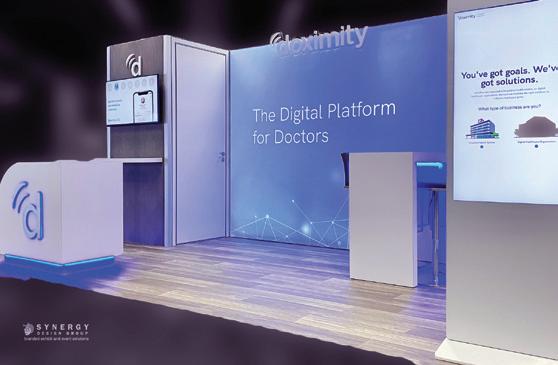

team we’ve built, it’s important that I’m here to be of service to help the team grow.”
Lobos says the acquisition and integration process encouraged better communication, being open to feedback and growth, and adopting new technology to streamline processes. She emphasizes the importance of being in person now that the company is fully operational across two geographies.
Although the WBE ecosystem brought Synergy Design Group and Imagen together, Lobos reveals she resisted pursuing certification as a woman-owned business for years. “I fought being certified. I had been burned before as a small business. You get an RFP and hear nothing again. I was a check box. I also was a subcontractor and did not get business. It finally clicked when a friend mentioned that I undervalued women helping women in business. WBEC South was essential in this process. I see WBEs as collaborators.”
Synergy Design Group continues to be on a growth trajectory. They have won numerous awards including two 2024 Gold Awards at the Hermes Creative Awards, and the company is ranked #1377 on the Inc. 5000 list and #8 in Louisiana. They were also awarded the 2023 SBA Women in Business Champion Award in Louisiana. The company became an approved vendor for the NFL including Super Bowl LIX in New Orleans. Lobos says, “It’s another opportunity to show the world we can do it. The team has really embraced that pride that we’re a resource for the NFL. Everyone’s having fun with it.” Lobos is not content to stay
in the same spot and is already working on launching a new division of Synergy Design Group.
Lobos offers the following advice for anyone looking to take a similar path, “Acquisition is a good growth strategy. Make sure your values are in alignment with team members and leadership working together. Be up front about your non-negotiables and do your due diligence. The process took several months. Make sure you understand how much time it takes to move it forward. I felt unprepared in some ways regarding the things I didn’t know. Don’t wait if the opportunity presents itself to explore it.” WE
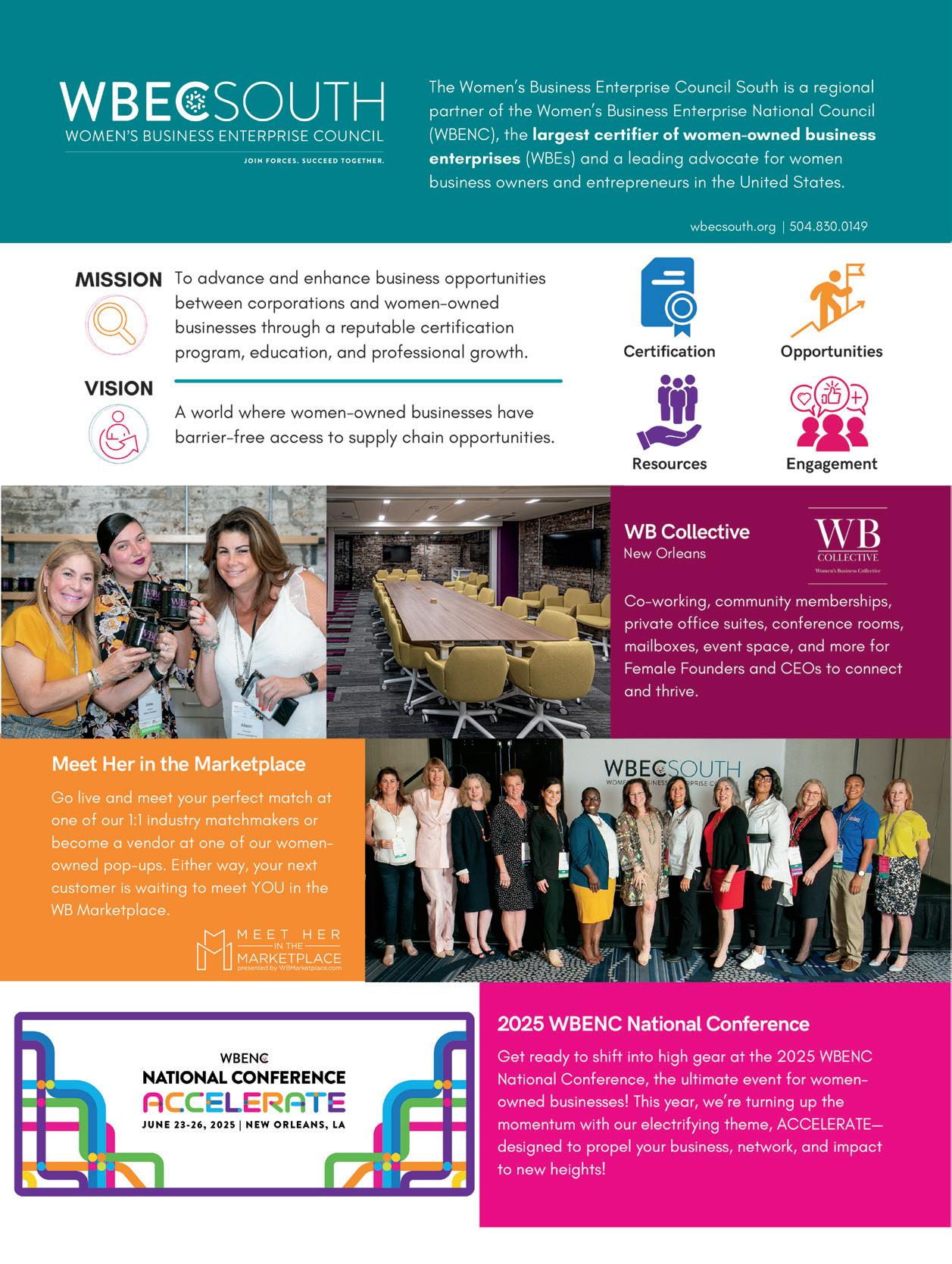


Value Acceleration focuses on making your business stronger and more valuable while you still own it. By improving key areas of your business, you’re not only preparing for a smooth potential exit down the road but also running a more profitable and efficient operation in the meantime. Think of it like preparing a home for the market— enhancing your business’s curb appeal. The difference? These improvements not only make your business more attractive to buyers down the road but also benefit you right now, throughout all the years you continue to own it.
Focusing on the 4 Cs of Value Creation well before your potential exit or retirement ensures your business runs at its best and increases its worth when you’re ready to sell or transition down the road.
Buyers want businesses that are scalable, efficient, and not overly reliant on the owner. You want to make your company more appealing to potential buyers, even if your plan is to transition internally to family members. Many times, some level of financing is needed to transition effectively. Consider what banks look at when lending, in addition to what a potential external buyer may be most concerned about.
A solid exit plan ties your business growth to your personal and personal financial goals, helping you retire comfortably or fund your next adventure.
Strengthening the 4 Cs identifies areas for improvement, reduces risks, and ensures your business is prepared for anything—whether it’s growth, sale, or unexpected challenges such as natural disasters or economic downturns.
A Certified Exit Planning Advisor (CEPA) guides you through the Value Acceleration process, coordinating your team to ensure every detail is covered for a successful exit.
One of the biggest mistakes business owners make is waiting until they’re ready to sell or retire to start planning their exit. Without enough time to prepare, you risk leaving money on the table, missing out on potential buyers, or struggling to transition smoothly. Starting early ensures you maximize your business’s value and align it with your long-term personal and financial goals. By focusing on the 4 Cs and planning early, you’ll create a stronger, more valuable business today—and a smoother exit tomorrow.

To get started in boosting your business value, focus on improving four key areas:
HUMAN CAPITAL
Building a strong, talented team that can run the business without you.
STRUCTURAL CAPITAL Creating processes, systems, and technology that keep operations efficient.
CUSTOMER CAPITAL Building loyal customer relationships and a strong reputation.
SOCIAL CAPITAL Establishing trust, culture, and relationships that make your business thrive.
LEARN MORE AT DEMAURIAC.COM

On Tuesdays at 10:00 AM CST, WBEC South’s Power Hours provide a dynamic virtual space for Women Business Enterprises (WBEs) to connect, share expertise, and expand their networks. Designed with WBEC South’s mission in mind, these webinars empower WBEs to learn from peers, showcase their talents, and collaborate across the region—all from the convenience of home or office.
Power Hours are an invaluable resource for WBEs looking to grow, learn, and connect. Combining education, networking, and inspiration, these sessions exemplify WBEC South’s dedication to empowering women-owned businesses across the region.
Make Tuesdays at 10:00 AM CST a priority and plug into Power Hours—the connections you make and the lessons you learn could transform your business.

Power Hours go beyond traditional webinars; they’re a cornerstone of WBEC South’s commitment to fostering collaboration and education among WBEs. Kelsey Cunningham, WBE Programs Manager at WBEC South, explains, “WBEC South’s Power Hours have been an incredible opportunity to connect with our network across multiple states. They provide WBEs with a platform to showcase their businesses and expertise in an engaging way that delivers value to everyone in attendance.”
Open to all, these sessions welcome WBEs, resource partners, WBEC South staff, and corporate representatives, creating a unique environment for building relationships and gaining insights from a diverse audience.
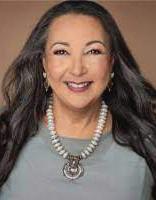

Power Hours have already made a significant impact, with standout sessions earning rave reviews. One highlight is the annual "Manifest Your Mantra" workshop led by Nancy Allen, President and CEO of WBEC Florida. This transformative session kicks off each calendar year by helping attendees discover their focus word for the year and equipping them with strategies to achieve their goals. Focus words from 2025 such as “Be Bold,” “Consistency,” and “Disrupt” have set the tone for personal and professional growth.
Another memorable session featured Amanda Zack, Vice President of Programs at WBENC, and Erin Watson, Vice President of Marketing and Communications at WBENC. Their engaging discussion on leveraging WBENC’s programs and initiatives, along with insights into the 2025 WBENC Conference (where WBEC South will serve as the host RPO), provided attendees with invaluable tools to maximize their involvement within the network.
Building on a successful 2024 pilot year, the 2025 Power Hours lineup promises even greater variety. Attendees can anticipate sessions on marketing strategies, the importance of public relations, financial planning, and achieving work-life balance as entrepreneurs. Every session is carefully designed to deliver actionable insights and address key areas of interest for WBEs.
Featured speakers gain significant visibility through promotion on WBEC South’s website, social media, and email newsletters. These sessions provide a platform for speakers to connect with WBEs across regional and national markets. Interactive Q&A segments, live chats, and networking opportunities further enhance the experience, fostering meaningful connections among attendees.
Whether attending or presenting, Power Hours offer numerous ways to engage. Attendees are encouraged to participate by being on camera, introducing themselves, and engaging in live discussions to maximize the experience.
For WBEs interested in becoming featured speakers, these sessions provide an exceptional opportunity to showcase expertise, gain visibility, and expand their reach within the WBEC South network. Topics in high demand include marketing, public relations, financial and HR-related subjects, and wellness.
“The sessions are an excellent platform to share your expertise while building connections with other WBEs,” Cunningham adds.
To learn more about being considered for a featured speaker engagement, contact Kelsey Cunningham at kcunningham@wbecsouth.org. BY
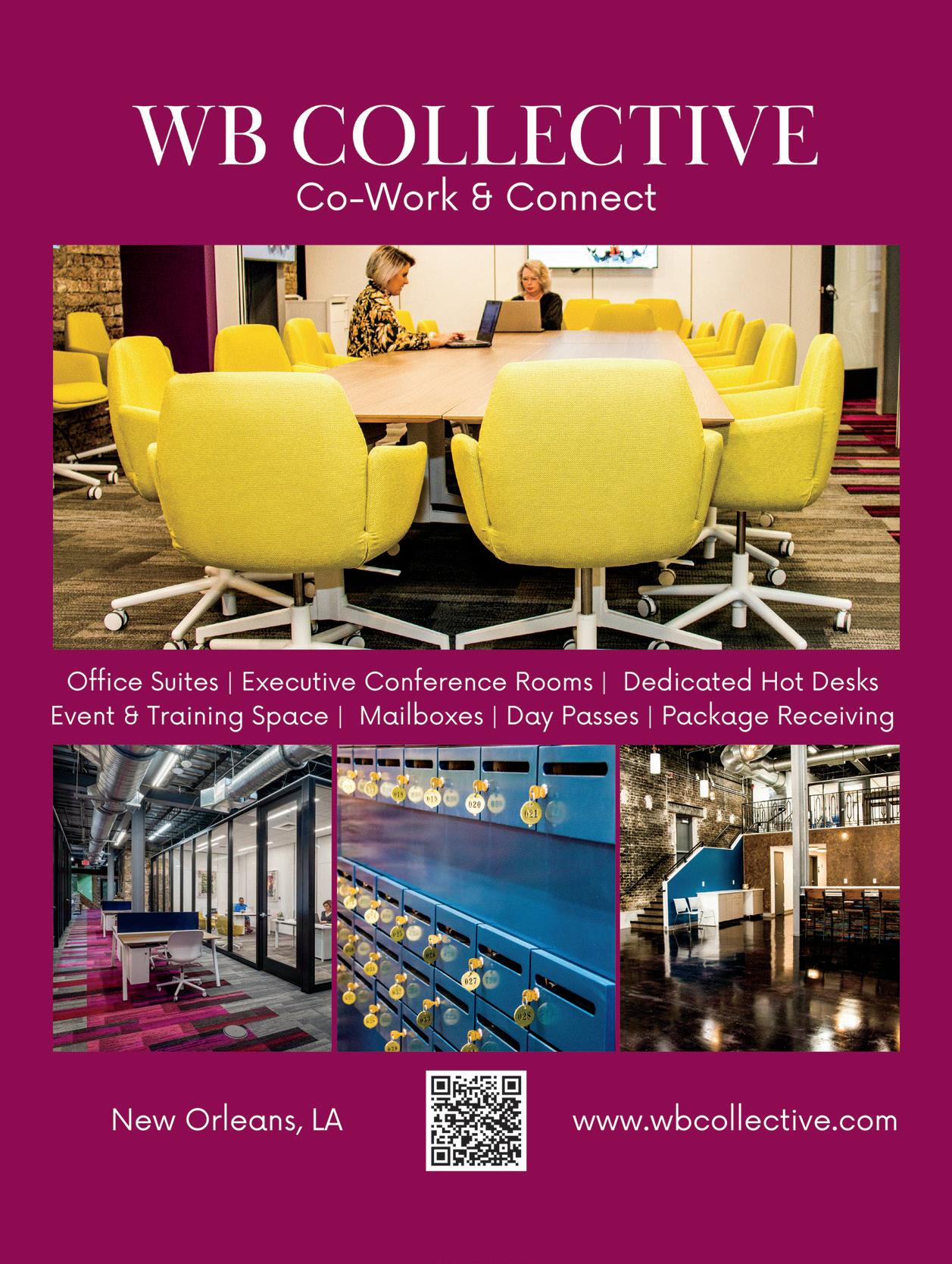

In today's digital age, technology plays a crucial role in the success of businesses, regardless of their size or industry. We’ll guide you through four essential steps to help you make an informed choice when selecting an IT manager or Managed Service Provider (MSP) to ensure a successful hiring process.

It is essential to evaluate your specific IT needs and align them with your business goals. Start by assessing your current technology infrastructure, identifying areas that require improvement or enhancement. Consider the following questions:
• What are your IT priorities and objectives?
• What specific skills and expertise are required to meet your technology needs?
• Do you require specialized knowledge in areas such as cybersecurity, compliance, cloud computing, or data management?
• Are you looking for someone with experience in your industry or niche?
Once you have a clear understanding of your IT requirements, it's time to decide whether you should hire an IT manager in-house or engage an MSP. Consider the following factors when making your decision:
BUDGET
Evaluate the financial resources available for hiring an in-house IT manager versus outsourcing to an MSP. Consider both short-term and long-term costs, including salaries, benefits, training, and equipment expenses.
EXPERTISE AND SCALABILITY
Assess the IT complexity of your business and determine if an in-house IT manager can handle all aspects effectively. An MSP may offer a broader range of specialized skills and scalability to meet your requirements.
RISK MANAGEMENT
An in-house IT manager may provide more control over data security and confidential information. On the other hand, MSPs often have robust security measures and compliance frameworks in place.
Craft a comprehensive job description to attract top talent for the IT manager role.
JOB RESPONSIBILITIES
Outline the specific tasks and responsibilities for the role. This may include overseeing network infrastructure, managing hardware and software, implementing cybersecurity measures, maintaining compliance standards, and providing technical support.
QUALIFICATIONS AND EXPERIENCE
Specify the requirements, such as relevant certifications, degrees, and technical expertise. Consider including preferred experience in areas such as project management, vendor management and team leadership.
COMPANY CULTURE AND VALUES
Highlight your company's culture, values, and commitment to diversity and inclusion. Emphasize your support for women in technology and commitment to fostering a diverse and inclusive work environment.
OPPORTUNITIES FOR GROWTH
Describe the potential for professional development, training and career advancement within your organization. Highlight participation in innovative projects or exposure to cutting-edge technologies.
MSP REQUIREMENTS
If you determine engaging an MSP aligns better with your business goals, you will want to:
• Create a short list of potential MSPs that meet your requirements for job responsibilities, qualifications and company culture.
• Contact their current or past clients to gain insights into their service quality, responsiveness and customer satisfaction.
• Evaluate the financial stability of the MSP to ensure they will be a reliable and longterm partner for your IT needs
BY MICHELE MILLER, FOUNDER & PRESIDENT, ENER
To ensure a smooth and efficient hiring process, follow these key steps:
CANDIDATE SCREENING
Review applications to shortlist candidates who meet the desired qualifications and experience. Conduct initial interviews to assess their technical knowledge, problemsolving skills and cultural fit.
TECHNICAL ASSESSMENT
Develop a technical assessment to evaluate candidates' proficiency in areas relevant to your IT needs. This may include practical exercises or theoretical questions to gauge their expertise.
SEEK REFERENCES
Request references from the applicant and contact their current or past employers to gain insights into their work ethic, technical knowledge and dependability.
Assess candidates not only for their technical skills but also for their alignment with your company's values, culture and commitment to fostering a diverse workforce.
Extend a job offer and negotiate terms and conditions. Develop a comprehensive onboarding plan and training to help the new IT manager integrate seamlessly into your organization.
• Hire an MSP that is local and has a live person available 24/7/365 that holds the highest certifications and credentials such as Certified Information Systems Security Professional (CISSP).
• Review the MSP’s contract to make sure your specific IT needs, such as network management, data backup, vendor management or cybersecurity are covered and clearly defined.
• Go over the MSP’s implementation plan to make sure the plan will meet your business needs and timelines.
• Establish regular communication channels with the MSP to ensure ongoing collaboration, issue resolutions and performance monitoring.
As technology continues to shape the business landscape, hiring an IT manager or Managed Service Provider is a critical step to thrive in the digital era. Embrace the power of technology and drive your enterprise toward a prosperous future.
LEARN MORE


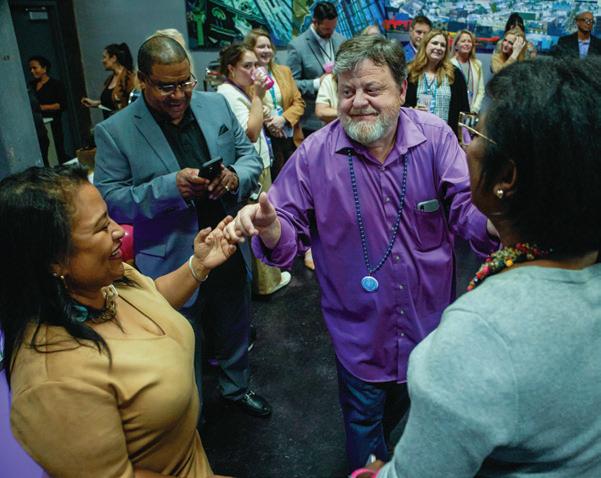
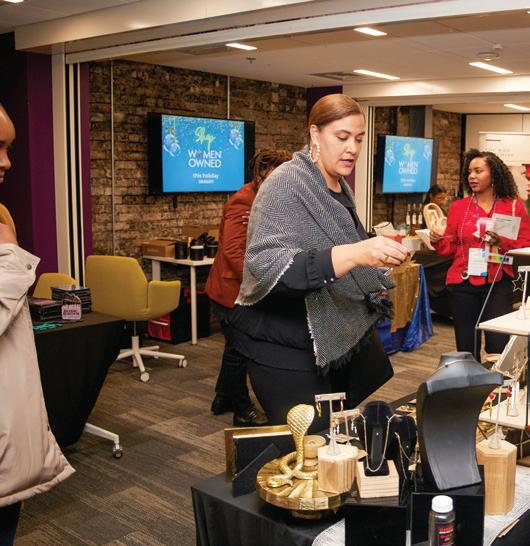
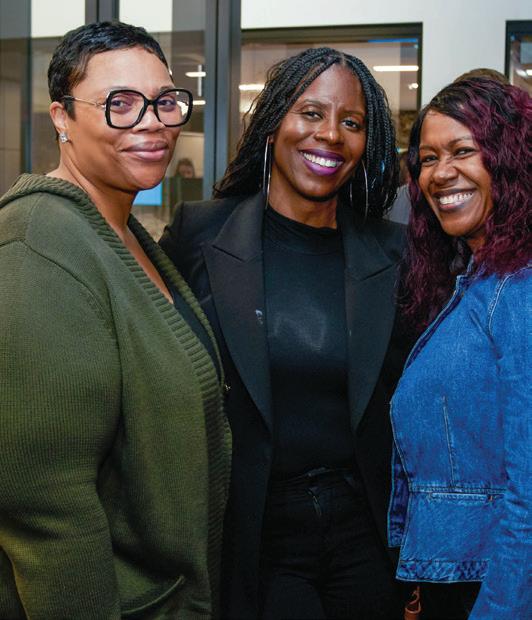
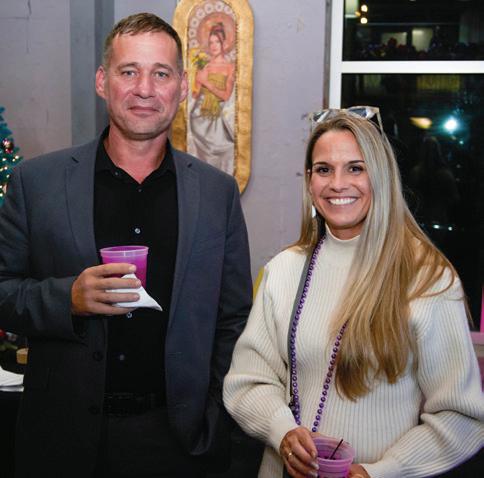


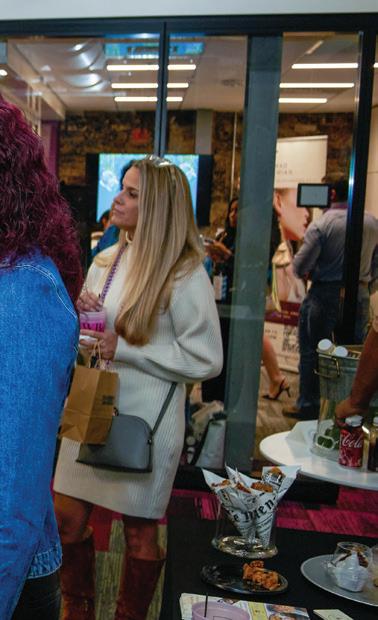

BY KELSEY CUNNINGHAM
ON THE EVENING OF December 4, 2024, the WB Collective transformed into the ultimate gathering space, commemorating five years of empowering women entrepreneurs in New Orleans. Hosted in collaboration with partner organization Southern Region Minority Supplier Development Council (SRMSDC), the milestone event not only honored the Collective’s impact but also served as the perfect kickoff to WBEC South’s annual WE Summit.
With every corner of the WB Collective filled with 200+ attendees, the energy was electric. Business leaders, corporate representatives, WBEs, MBEs and Summit attendees gathered in a space designed to foster community and collaboration.
The event offered an immersive experience, with jewel-toned balloon arches and glowing bars setting the perfect ambiance. Guests indulged in a feast of culinary delights, including a beignet station, French fry bar, pasta stations and passed appetizers. Custom cocktails were served in color-changing, Mardi Gras-themed WB Collective cups, adding a signature New Orleans touch.
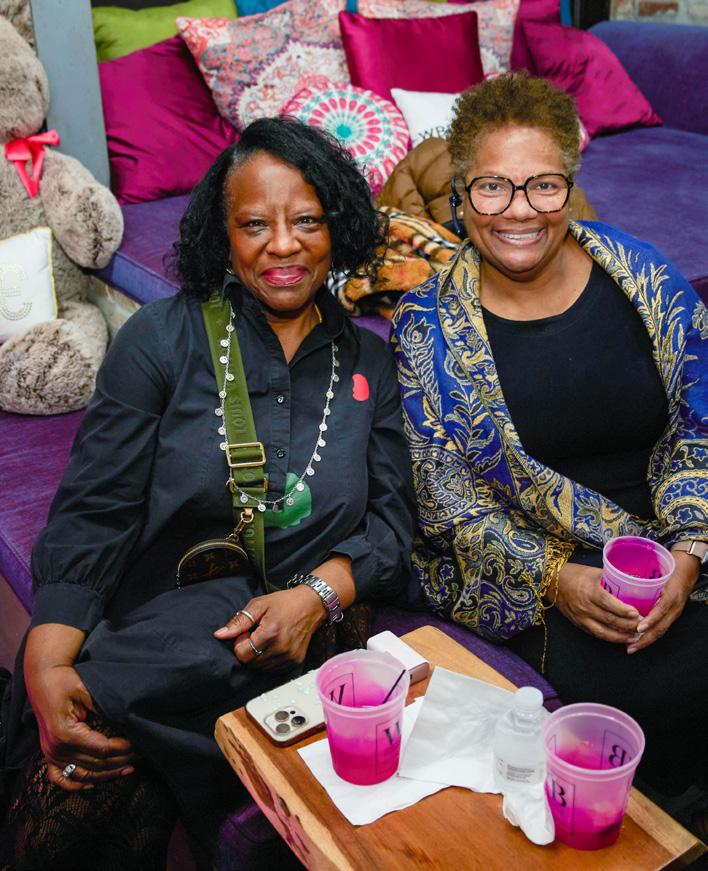
The celebration was further elevated by music from DJ Charles Belonge, setting the stage for the night’s biggest surprise—a special appearance by the elite Zulu Tramps and their accompanying brass band as a tribute to departing WBEC South President and CEO, Phala Mire. The Tramps' electrifying energy and vibrant attire brought an unforgettable finale to an extraordinary evening.
But beyond the festivities, the evening was a testament to the WB Collective’s impact over the past five years. More than just a coworking space, the WB Collective has become a thriving hub for women business owners, offering office space, conference rooms, event space rentals, unparalleled networking opportunities and access to WBEC South programming.
For many entrepreneurs, the Collective has been a gamechanger. Kathlyn Perez, Founder of Perez Law, a boutique employment law practitioner, credits the space with giving her a new perspective on business ownership.
"I found the WB Collective shortly after I started on my entrepreneurial journey building my boutique employment
law practice," Perez shared. "After leaving a law firm to become a company of one, it was wonderful to be surrounded by so many energetic, successful women business owners. The space at the WB Collective is incredible and has everything a business like mine could need, and its beautiful decor is a far cry from the stuffy law firm environment I was used to! I have enjoyed getting to know everyone in the Collective and celebrating the successes of all of its members."
For others, the WB Collective has been a source of both practical business support and personal inspiration. Lacy Davillier, Owner of Davillier Photography & Graphics, emphasized the community’s role in her professional growth.
"The WB Collective has truly been a godsend for my business. The unwavering support they’ve provided has been instrumental to my growth, from guiding me through the certification process to creating invaluable connections with new clients,” said Davillier. “Beyond the tangible benefits, the Collective fosters an incredible sense of community—women coming together to uplift, empower, and champion each other’s success. Together, we’re not just building businesses; we’re making herstory."
Shannon Fazande, CEO of Fazande Consulting and one of the

WB Collective’s long-time members, reflected on the Collective’s lasting influence on her entrepreneurial journey.
Fazande shared, "The first time I visited the WB Collective was during its ribbon-cutting ceremony. I was thrilled, and in that moment I set an intention to one day become a member. One year later, that dream became a reality! Since joining in September 2020, my business has grown year over year, thanks to the incredible support, programming, thought partnerships, and culture of this vibrant community. Everyone here is deeply committed to each other's success, and we go above and beyond to uplift and empower one another."
The night’s celebration brought together new and familiar faces, incredible entertainment and a thriving marketplace showcasing 12 womenowned vendors featuring a diverse array of offerings including body care, baked goods, cosmetics, jewelry and more. A sampling of vendors included NoLa Cookie Co., LLC, Exploradora Coffee, Phoenix Rising Cosmetics and NOLA Boards, who highlighted the creativity and talent within the womenowned community. It was a powerful reminder of the WB Collective’s mission: to create a space where women can work, grow, and support one another.
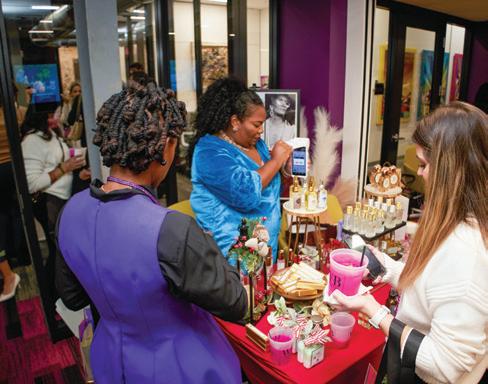
"Together, we’re not just building businesses; we’re making herstory."
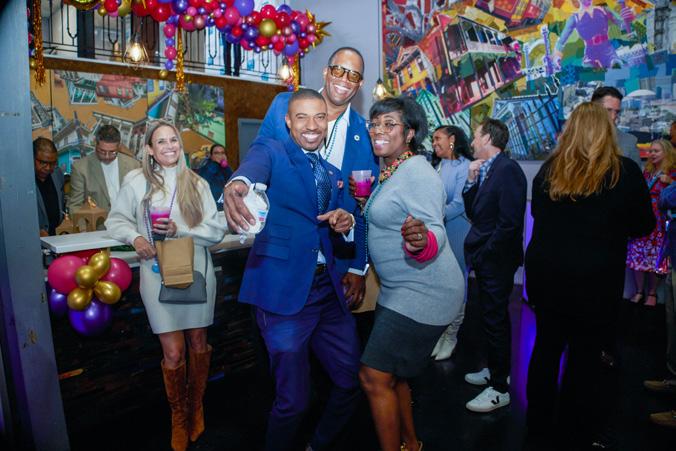
As the final notes of the Tramps echoed through the space, attendees left with a renewed sense of purpose—excited not only for the WE Summit the next day but for the continued growth of a community that has changed the game for women entrepreneurs in New Orleans and beyond. WE

In today's intensely competitive market, where generic content floods every corner, personalized video can be your secret weapon. It empowers you to communicate directly with your audience, showcase your unique value proposition, and build a deep emotional bond that sets you apart from the competition.
BY JUDY GATENA KARPINSKI, CEO & PROPRIETOR,
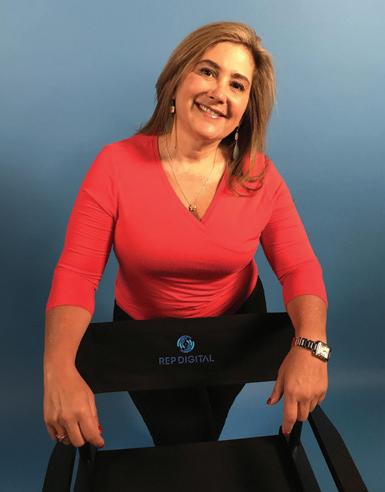
According to video marketing research firm Wyzowl, a staggering 96% of marketers consider video an important part of their marketing strategy. Even more impressive, 92% of video marketers have reported a positive return on investment (ROI) from their video efforts. This high success rate could be attributed to understanding how to effectively use video and the ability to track and measure its impact.
Here are some best practices to effectively utilize video marketing for your business:
Create video content that addresses your target audience's needs and pain points, forging a genuine connection with them. Always keep in mind that your primary objective is to craft videos that deeply connect with your audience, showcase your authenticity, expertise, and comprehension of their needs. Through personalized videos, you have the opportunity to leave a lasting impression, establish trust, and cultivate unwavering loyalty among your clients. Embrace the potential of personalized video marketing and experience the profound impact it can bring to your business.
While you don't need expensive equipment, focus on delivering high-quality videos that establish brand trust and credibility. Fortunately, starting with accessible tools like tablets or mobile devices equipped with HD cameras can deliver satisfactory results without the need for expensive equipment. Allocating resources to other aspects of video production, such as music, stock imagery, or editing software can further enhance the final product.
AI-powered tools can assist in scripting and planning videos, saving time and generating fresh ideas, but remember to infuse your unique voice and brand identity into the content. By leveraging AI as a valuable tool, business owners can create efficient and authentic scripts that establish a deep connection with their audience.
To keep your audience engaged and captivated, it is essential to explore a wide variety of themes and micro content under 30 seconds for short-form video content. There are countless possibilities to choose from, including interview snippets, blogs, product demonstrations, behind-the-scenes glimpses, customer testimonials and educational content. By embracing this diverse range of content themes, you will be able to effectively capture and retain the attention of your viewers, drawing them in to come back for more.
Distribute and share your videos across multiple platforms, leveraging social media, email newsletters and your website to reach your target audience. Encourage interaction with your audience, foster discussions, and create a vibrant community centered around your valuable video content.
Utilize analytical tools to assess the impact of your videos and make improvements based on audience insights. By understanding the impact of your videos, you can refine your approach, optimize future content, and guarantee that your videos genuinely strike a chord with your intended audience. By following these steps, you can begin to unlock the full potential of personalized videos in your marketing strategy. Video marketing presents a unique opportunity for you to craft and share your brand story, establish deep emotional connections with your clients, and generate valuable leads.
Throughout my years leading a video agency, I've witnessed firsthand the incredible impact that personalized video can have. Through our new platform, Morpheus Marketplace, we have had the privilege of helping thousands of marketing professionals scale their video campaigns and achieve remarkable success, yielding a 2000% increase in content creation year over year.

Corporations are constantly navigating shifting priorities. To succeed, they must do more than just focus on priorities. Corporations need to challenge their assumptions and establish greater clarity on how leaders and employees understand their role in adding value to the priority.
Many corporations place urgency on visible actions like email communications, town halls, and requiring midand senior-level leaders to set SMART performance goals. While these efforts have value, they don’t address the root causes of deeper challenges, such as leaders working beyond their capacity, employees struggling to fully engage, and initiatives becoming siloed across the organization.
In my work, companies that challenge the common assumptions achieve higher success rates and sustain their momentum long-term in navigating shifting priorities. One common assumption is that all employees understand the corporation’s strategic vision. According to the Office of Strategy Management, only 5% of employees do. Another assumption is that leaders have the capabilities to navigate shifting priorities. Gartner shows that only half of leaders agree they are prepared to effectively carry out a strategic initiative with their team. Additionally, companies often believe that what works for comparable organizations can be easily adapted without a tailored approach. Even if a corporation offers similar products and services, its workplace culture is always a unique differentiator, requiring a customized organization-wide focus.
If corporations want to achieve sustainable, long-term success, they have to work their WOW! Implementing the WOW approach spans across three stages. First, corporations should work with a clear intention that backs the priority and shapes decisions based on their current level of readiness. Next, the communication plan must be tiered to speak at an organizational level and speak to the language of leaders and employees who are directly impacted to influence early engagement. Lastly, corporations win by developing and implementing an engagement roadmap that enables individuals to own how their roles contribute to meeting determined milestones.
To create sustainable success, corporations must move through three essential stages:
Successful corporations have a foundational understanding of their current position and the direction required to successfully navigate a priority. This requires the use of a WOW engagement maturity model, detailed in my book, Inspired to Innovate, which provides a structured way for corporations to assess their readiness for change. There are four maturity levels of readiness that measure factors like employee engagement, communication effectiveness, strategy development, and cross-leadership buy-in. A maturity model helps corporations navigate shifting priorities by providing a clear roadmap for where they stand and what improvements are needed. It allows organizations to identify gaps and focus on targeted actions that build readiness, ensuring smoother transitions and better long-term success. When corporations meet employees where they are, they experience higher success rates in shifting priorities and sustaining engagement.
Corporations must communicate a priority as an opportunity to provide relevancy at an organizational level, cross-functional leadership and employee level. Too often, priorities are communicated in silos, leading to redundancy, confusion, and inefficiency in how departments assume what is expected of them. Depending on the management style of a leader, there could be teams that will immediately take action on a communication while other teams may wait for additional information. Varying momentum in how actions are pursued can lead to frustration with executive stakeholders who assume that all teams are equipped to move forward after a communication. Communicating a priority is different from integrating a priority. Communicating a priority involves providing clear, visible, and consistent messaging about the initiative and its impact. Integrating a priority ensures that systems, processes, and structures are designed to sustain the priority long-term. To support workplaces effectively, communication must be simple, relatable, and directly tied to their roles and how it relates to the current and upcoming phases of a priority deliverable.
One of the biggest challenges corporations face is the disconnect between strategy and execution. A successful engagement strategy integrates people, processes, and systems. Build a change-friendly process that focuses on addressing potential friction points, setting milestones to break change into manageable phases, and tracking progress with visual collaboration tools to ensure stakeholders are fully engaged. Instead of rolling out a corporate priority organization-wide, start with small-scale pilots to refine and adjust strategies based on real-time internal feedback. Corporations can sustain their success more effectively by building the infrastructure to support new priorities with pilots that make it easier to repeat and scale their success.
Remember, effective change isn’t about checking boxes when corporate priorities shift—it’s about building a workplace where employees feel valued, engaged, and empowered to contribute meaningfully. In times of change, uncertainty, and evolving objectives, one truth remains: people need to feel valued. When employees know their contributions matter, they are able to make better decisions, collaborate more effectively, and take ownership of their roles in ways that drive real results across corporations. WE
LEARN MORE AT WEOPTIMIZEWORK.COM AND ORDER THE BOOK INSPIRED TO INNOVATE AT WEOPTIMIZEWORK.COM/ INSPIREDTOINNOVATE
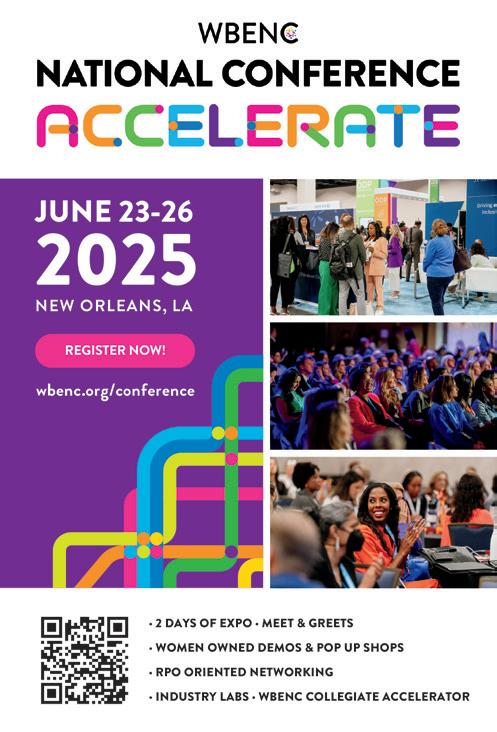

Scott Vowels Chairman, Apple
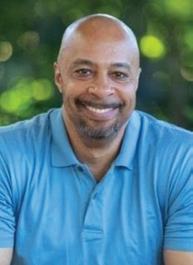
Ronda Brown Quarles
1st Vice Chair, Nissan
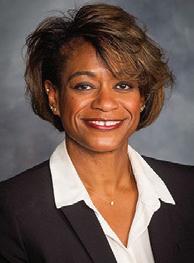
Donovan Casanave Treasurer, Shell
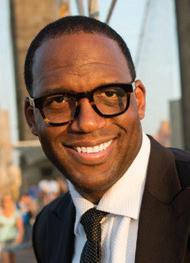
Jan Cable Secretary, Tennessee Valley Authority (TVA)
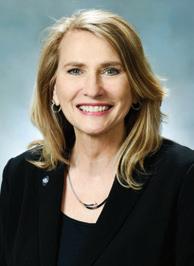
Susan Stentz Chair Emeritus
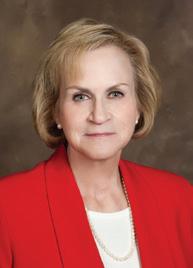
Chuck Hendrix At Large, WBENC

Nancy Swartout 2nd Vice Chair, ExxonMobil

David Feldman Immediate Past Chair, Chevron

Phala K. Mire President & CEO, WBEC South
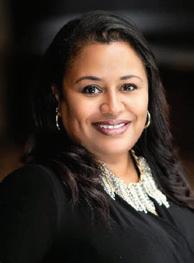

Alta Baker Safe Haven Enterprises

Kya Moller Entergy

Janice Migliore PALCO
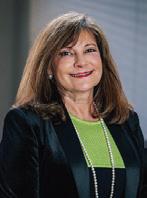
Pat Thomasson Thomasson Company
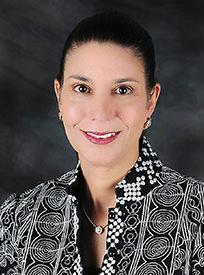
Shakira Blackstone Caesars Entertainment
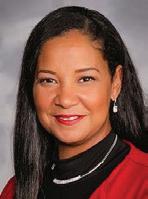
Kathleen Hunt Personalized Payroll Services
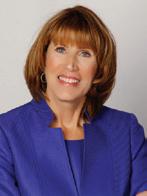
Yvette Moten BP America
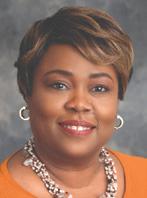
Deb Ward Televergence
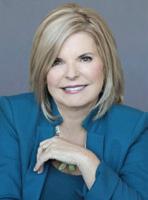
Terri Doochin Interstate Packaging

Joan LaGrasse Imagen
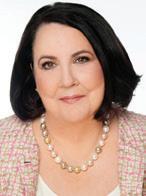
Sharon Reynolds DevMar Products

Avis Phillips Phillips & Jordan
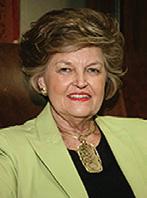
Matt Green Toyota

Teresa Lawrence Delta Personnel
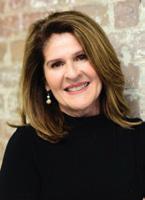
Anselmo Rodriguez Blue Cross Blue Shield of LA
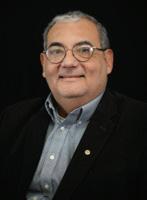
Sue Watkins Telecom Transport Services











































